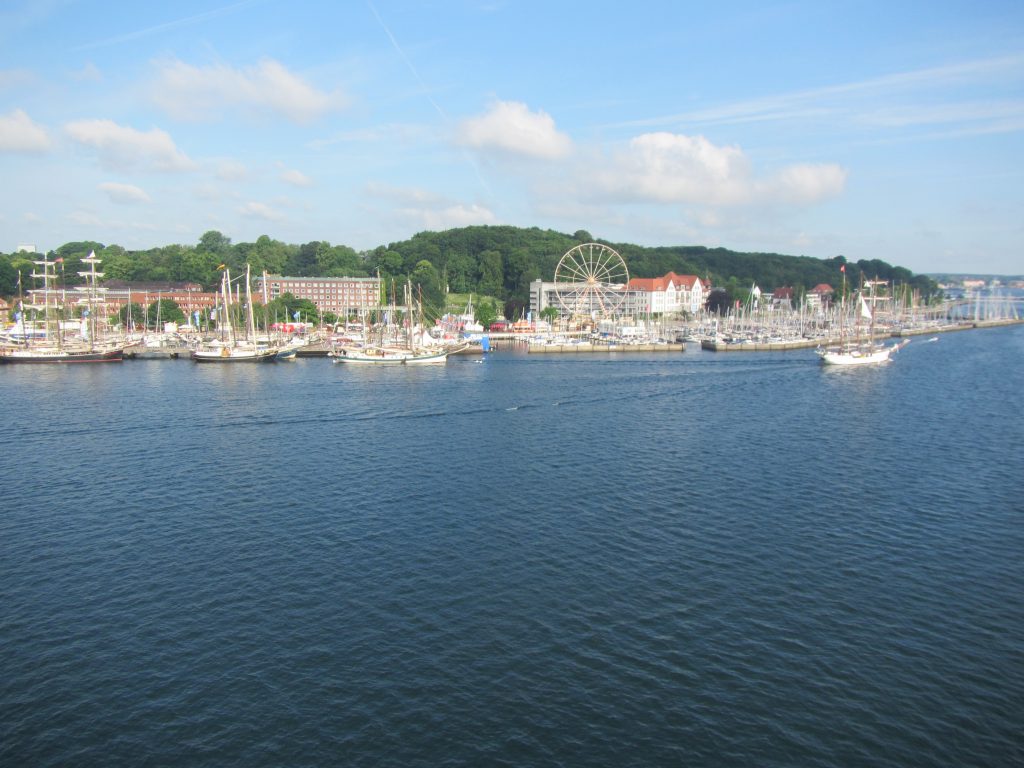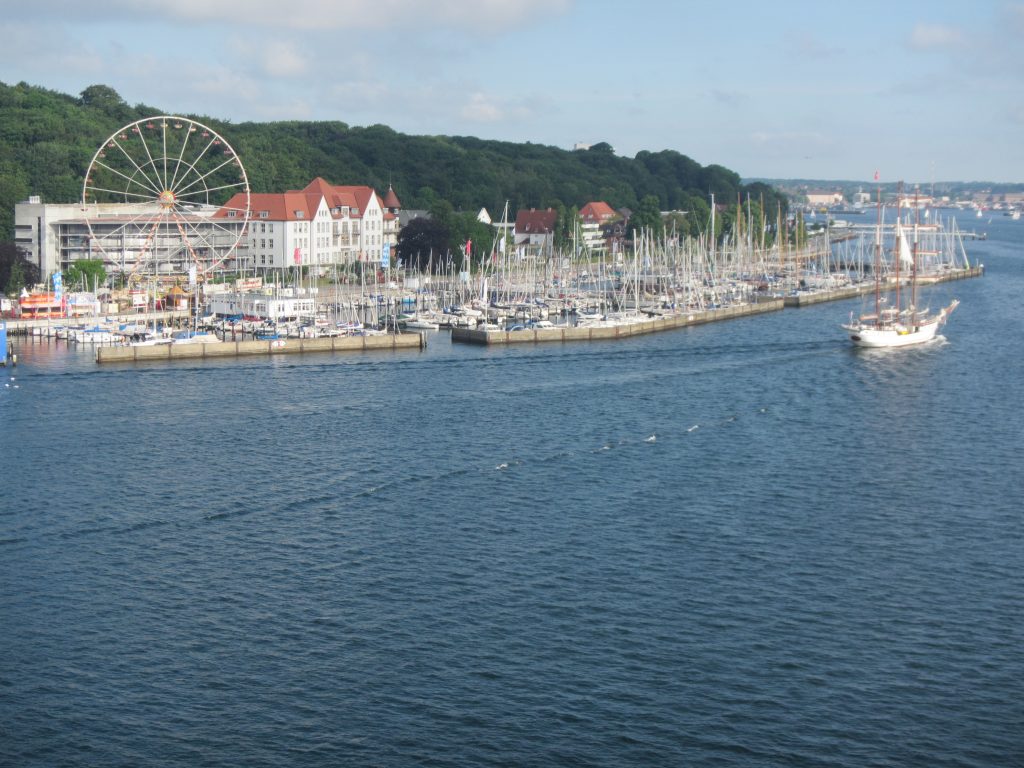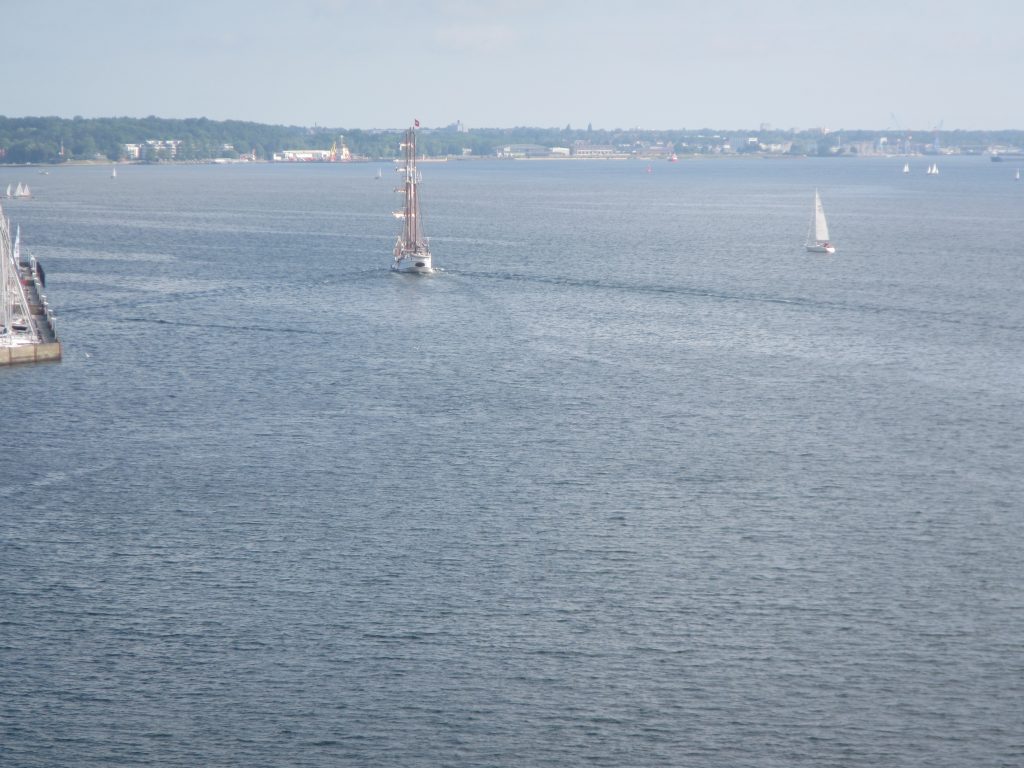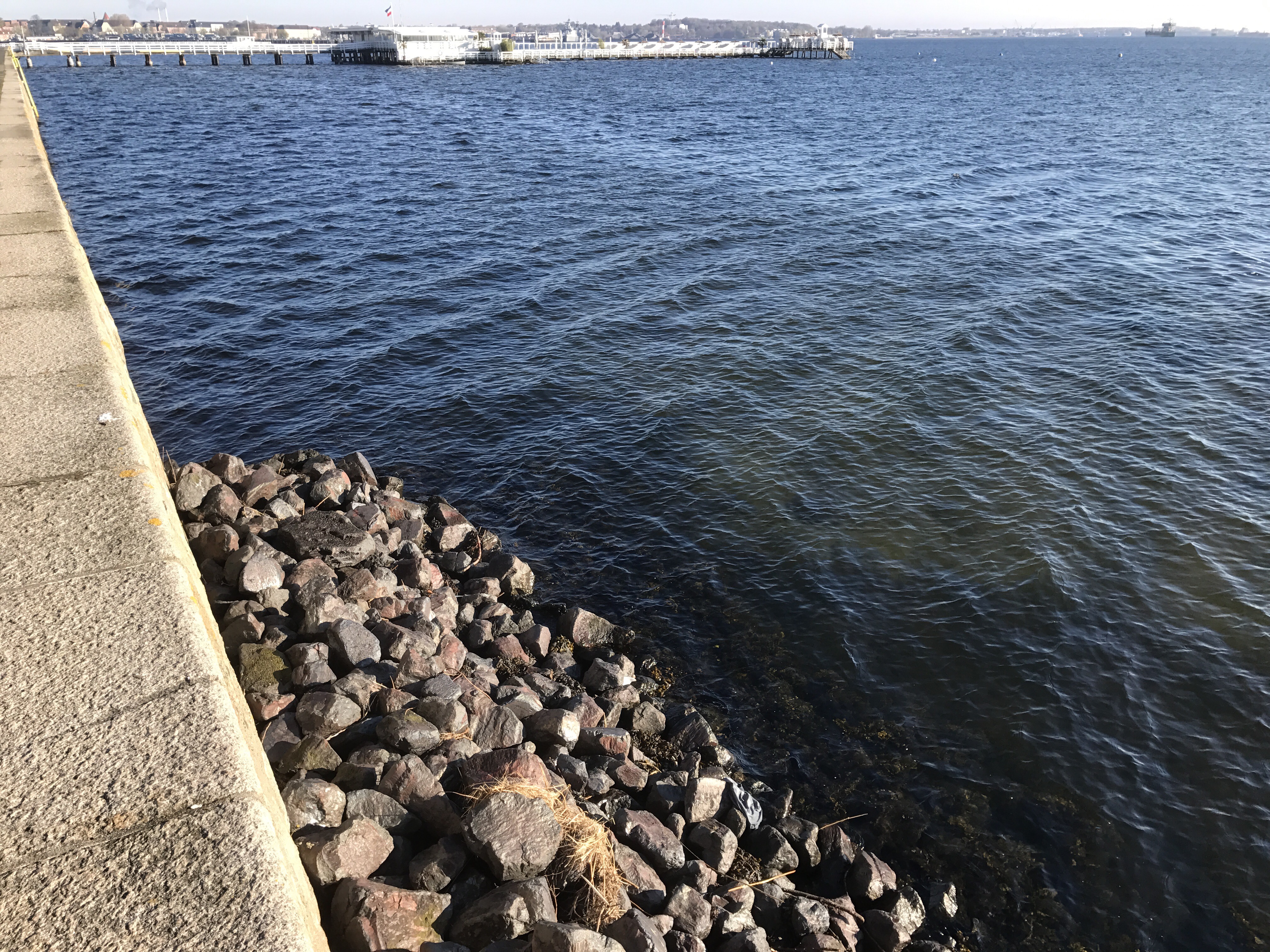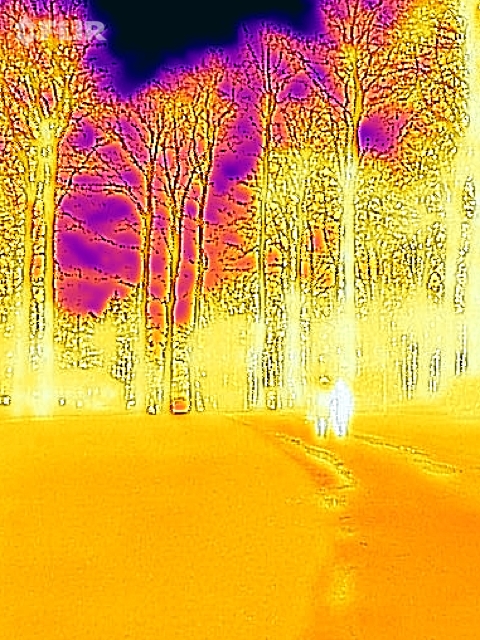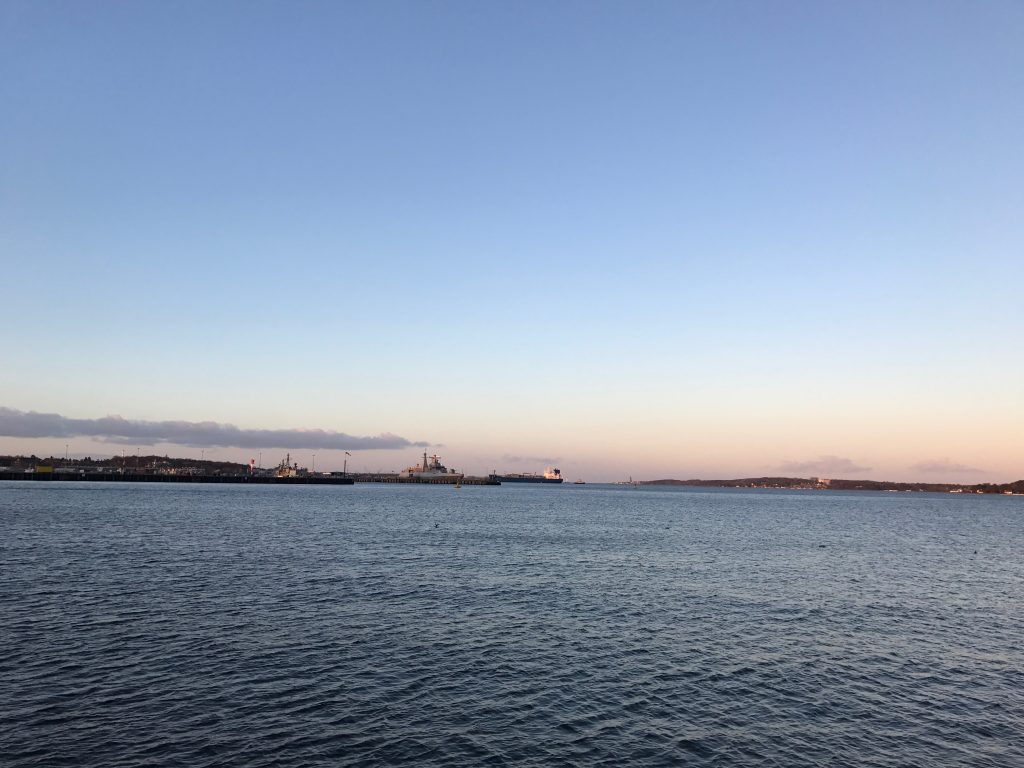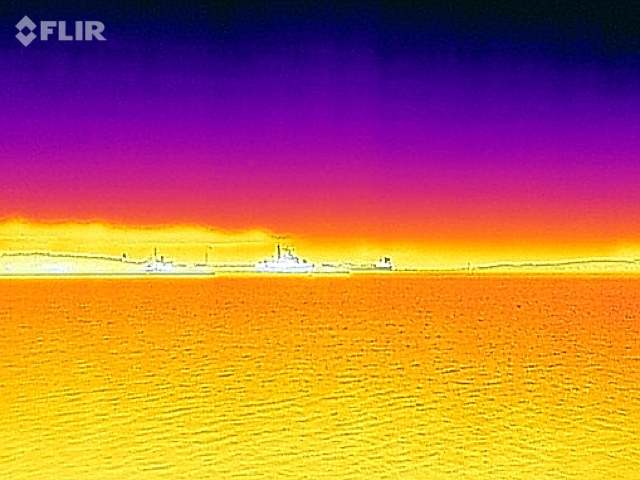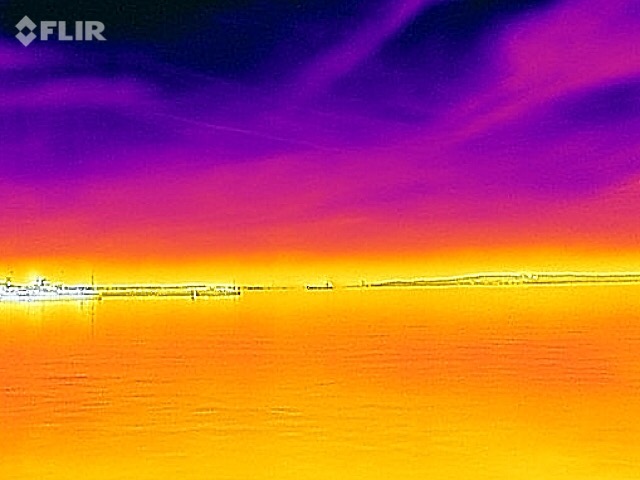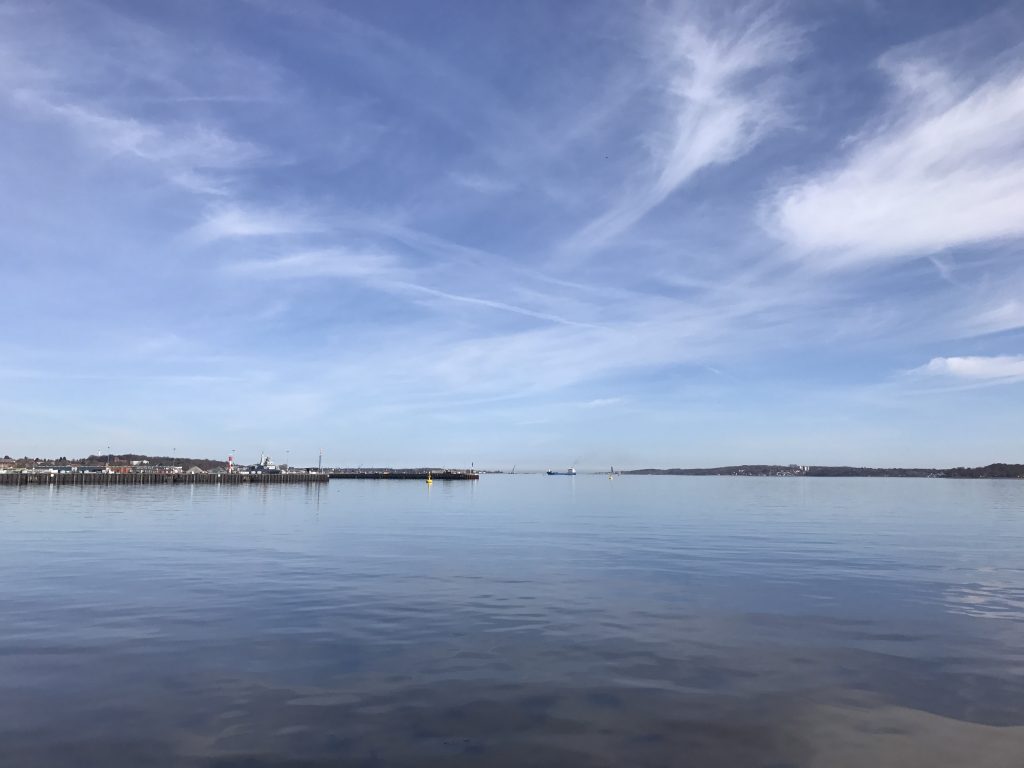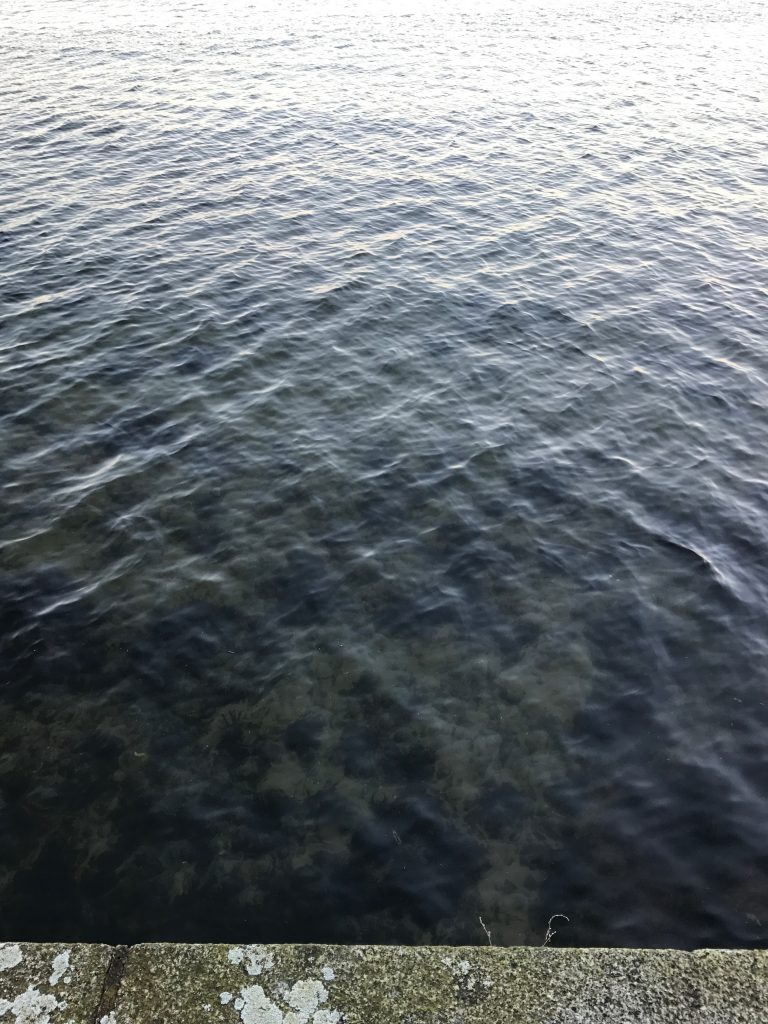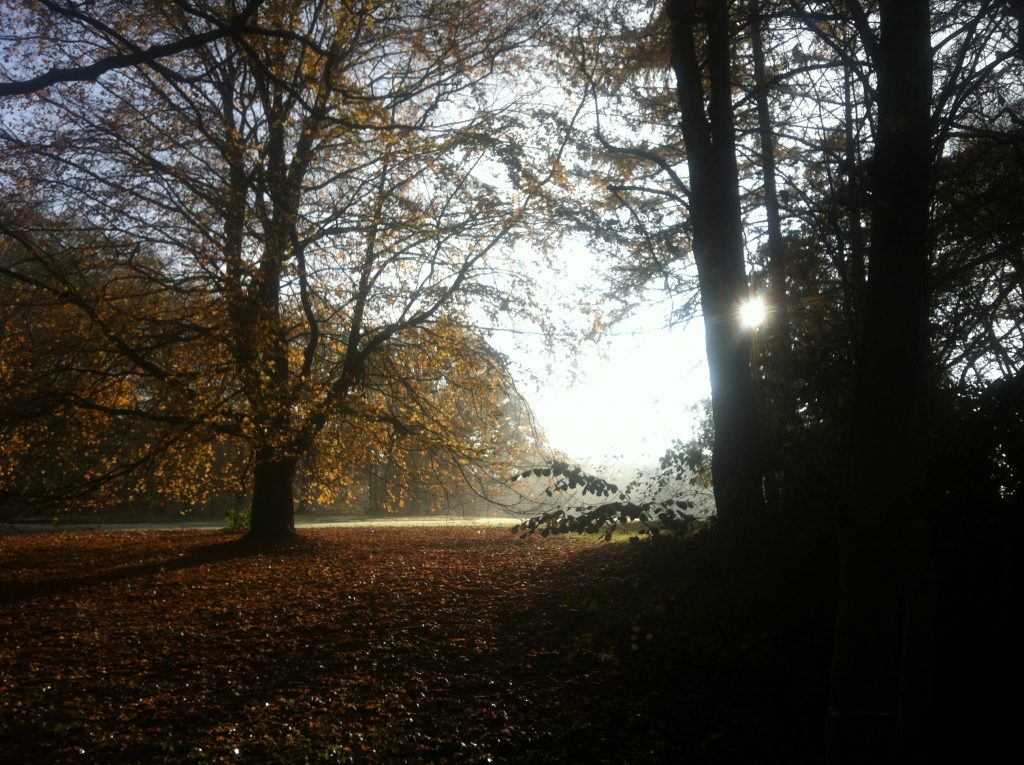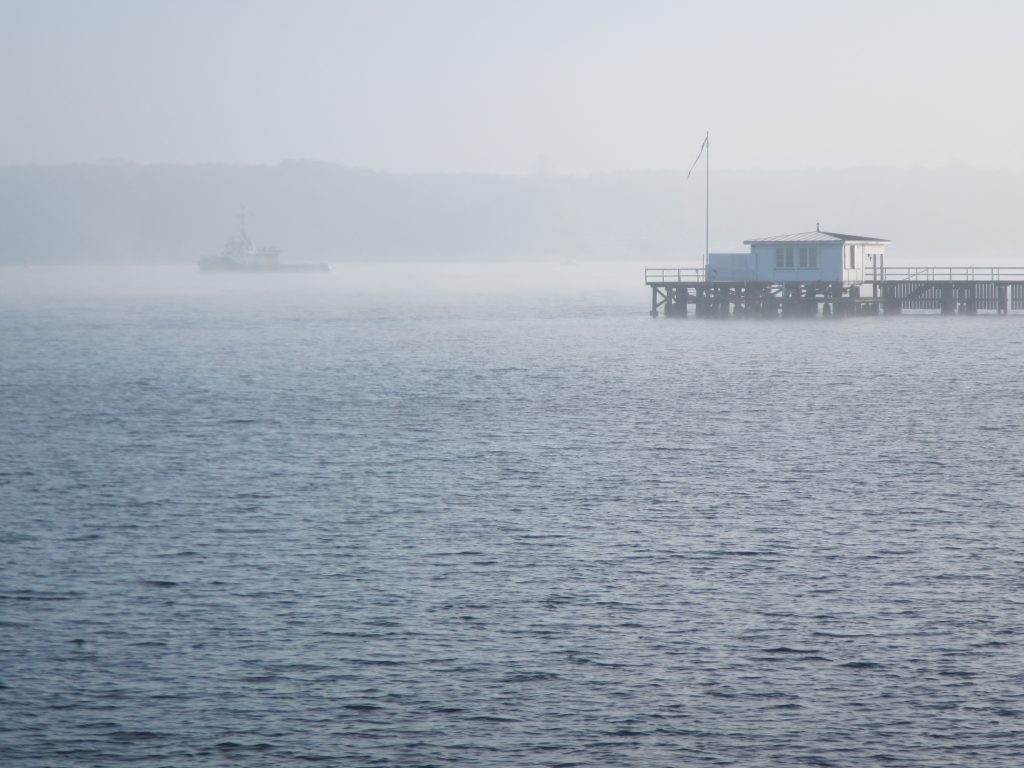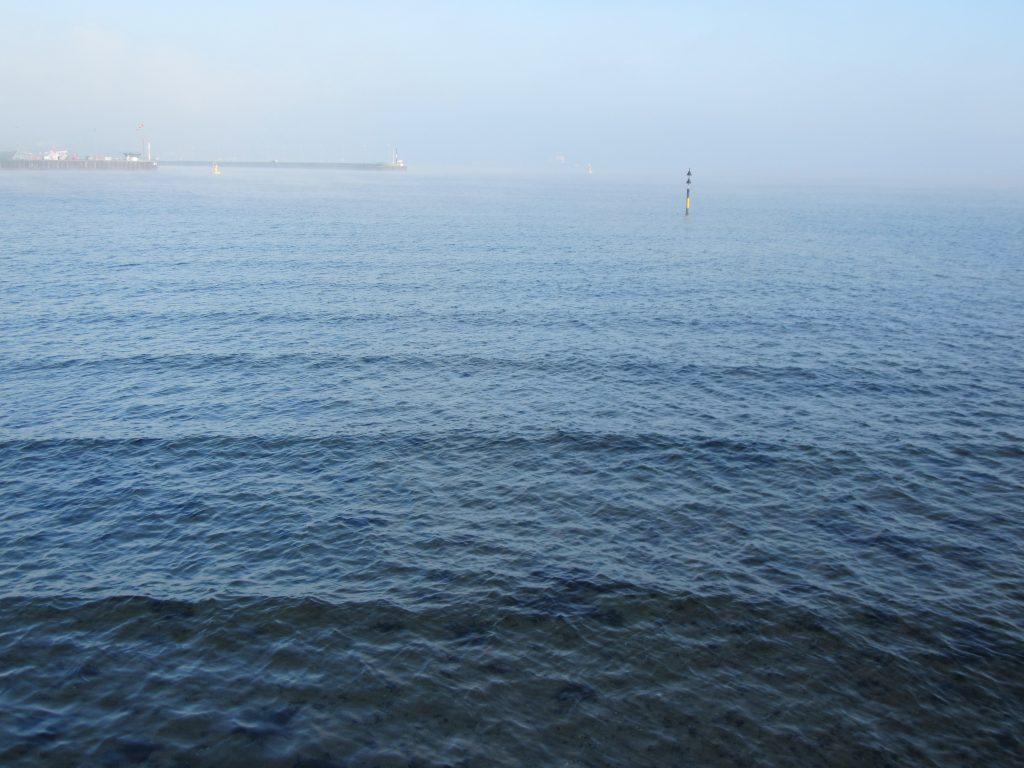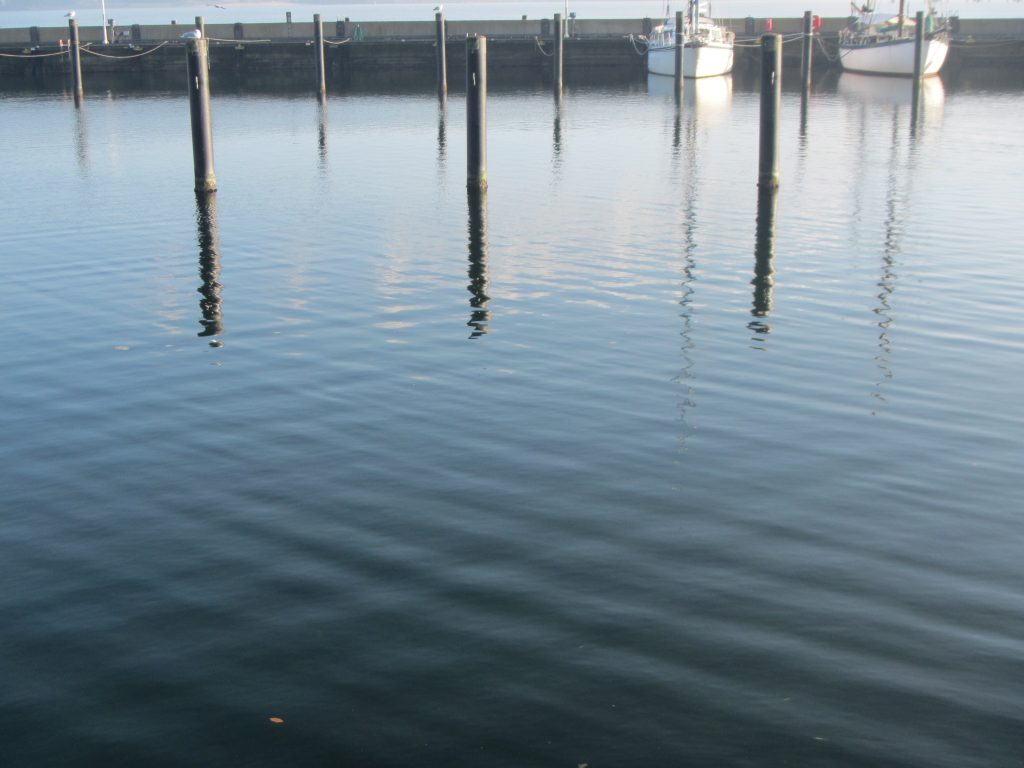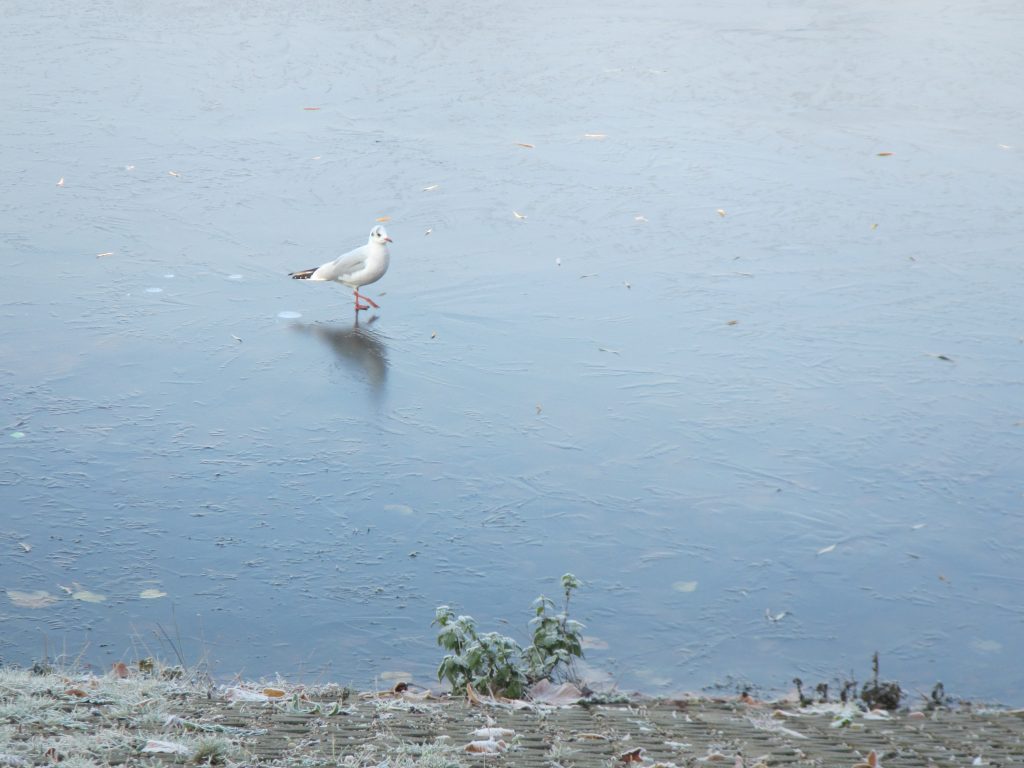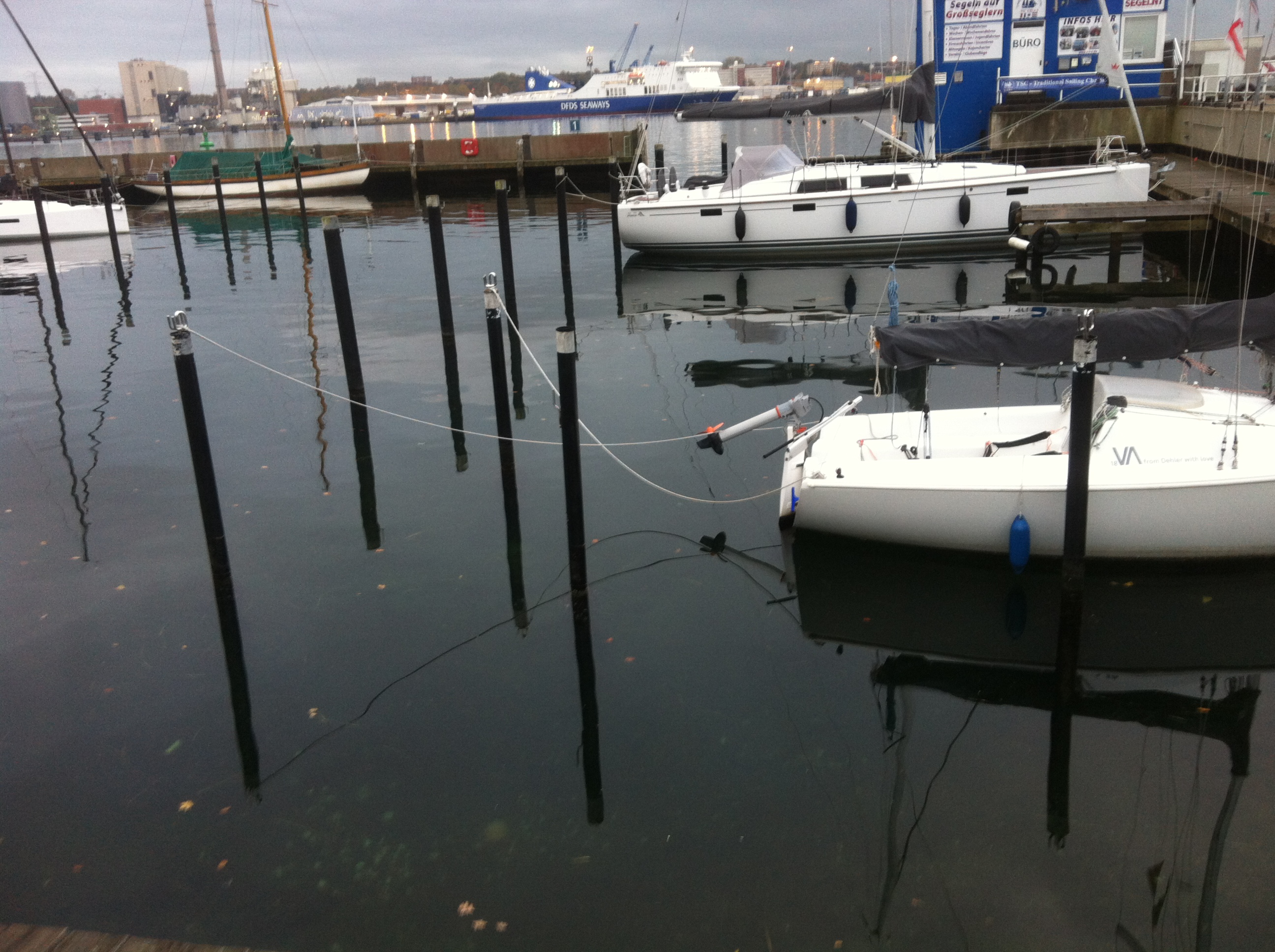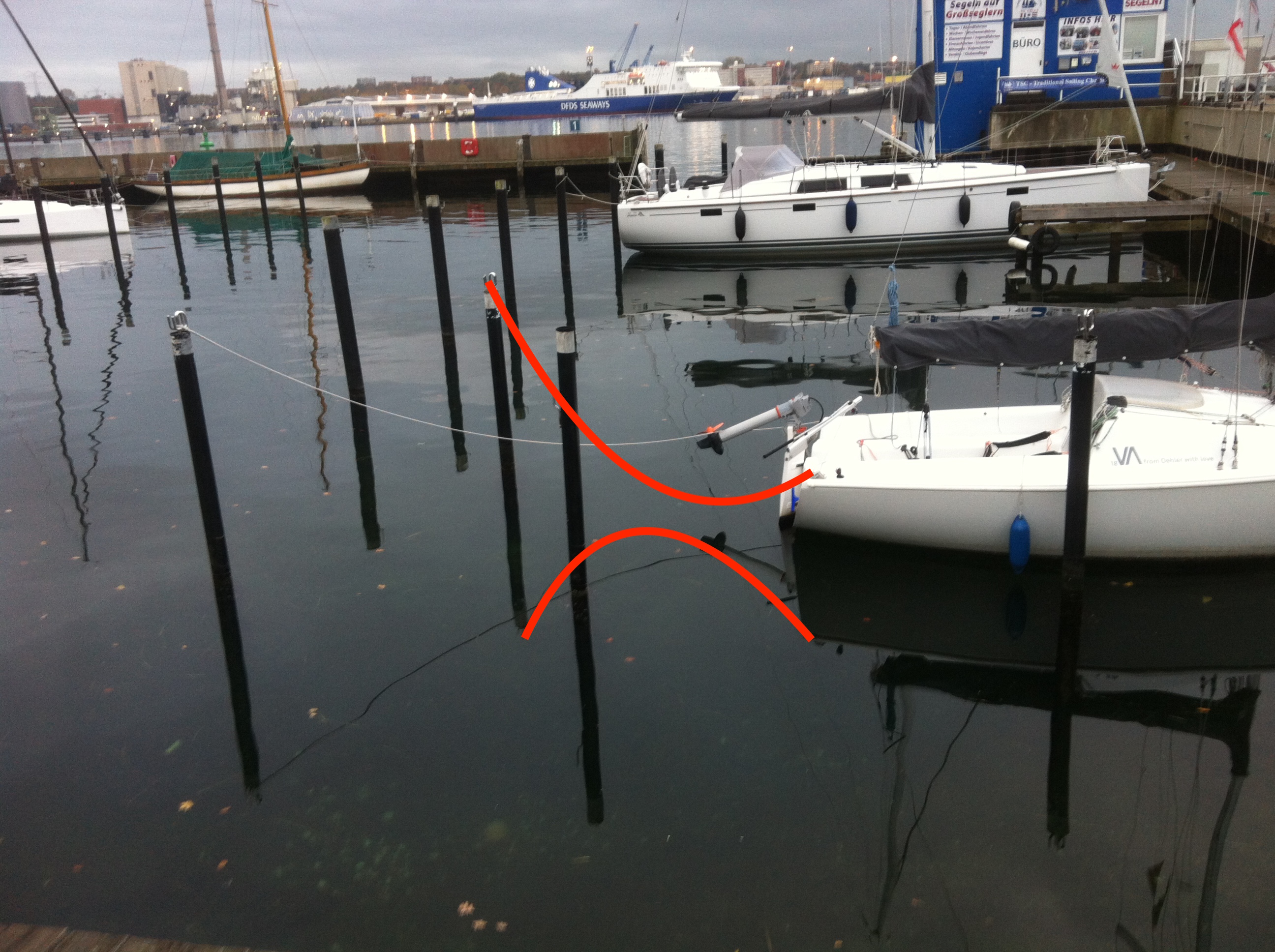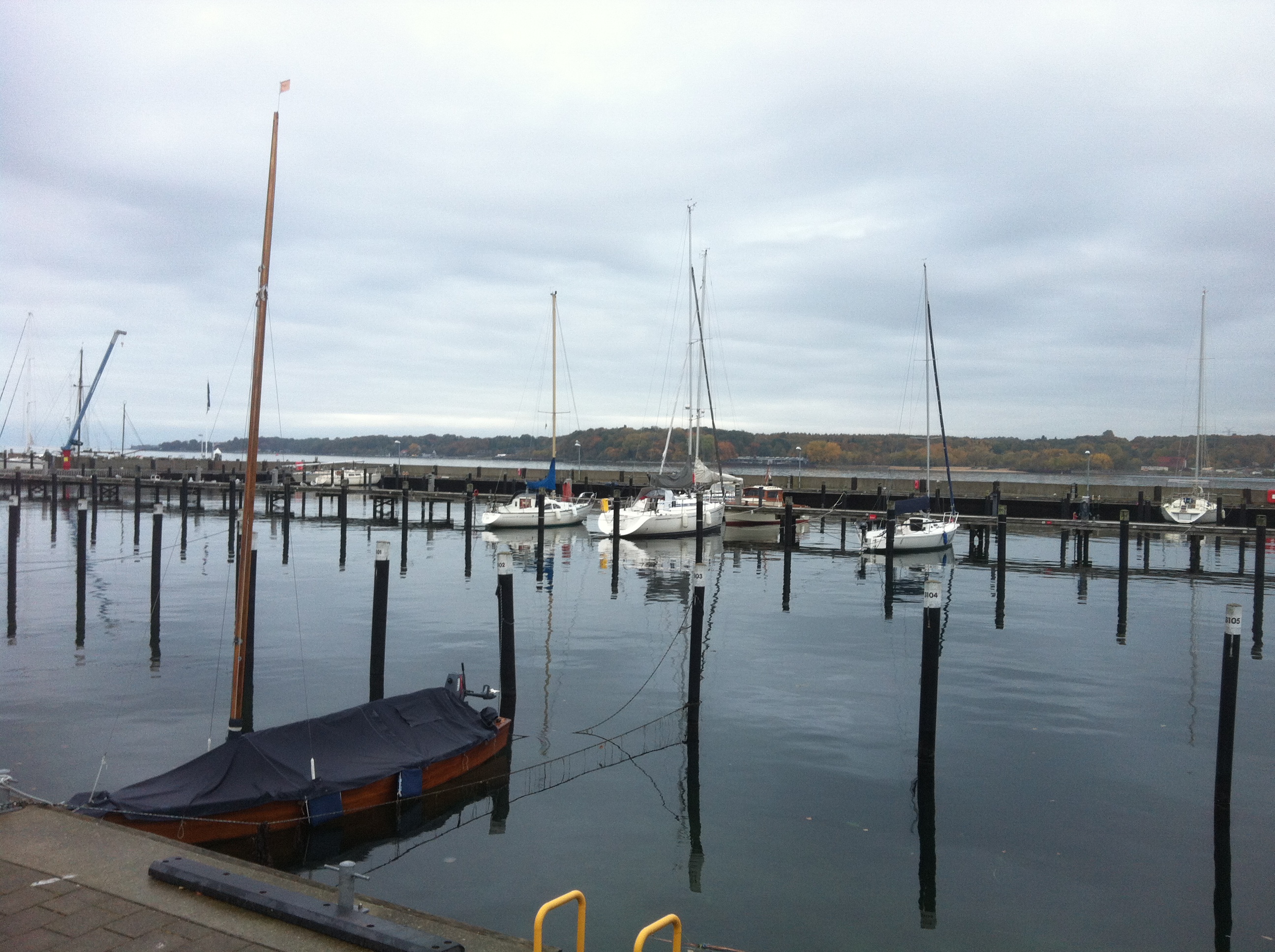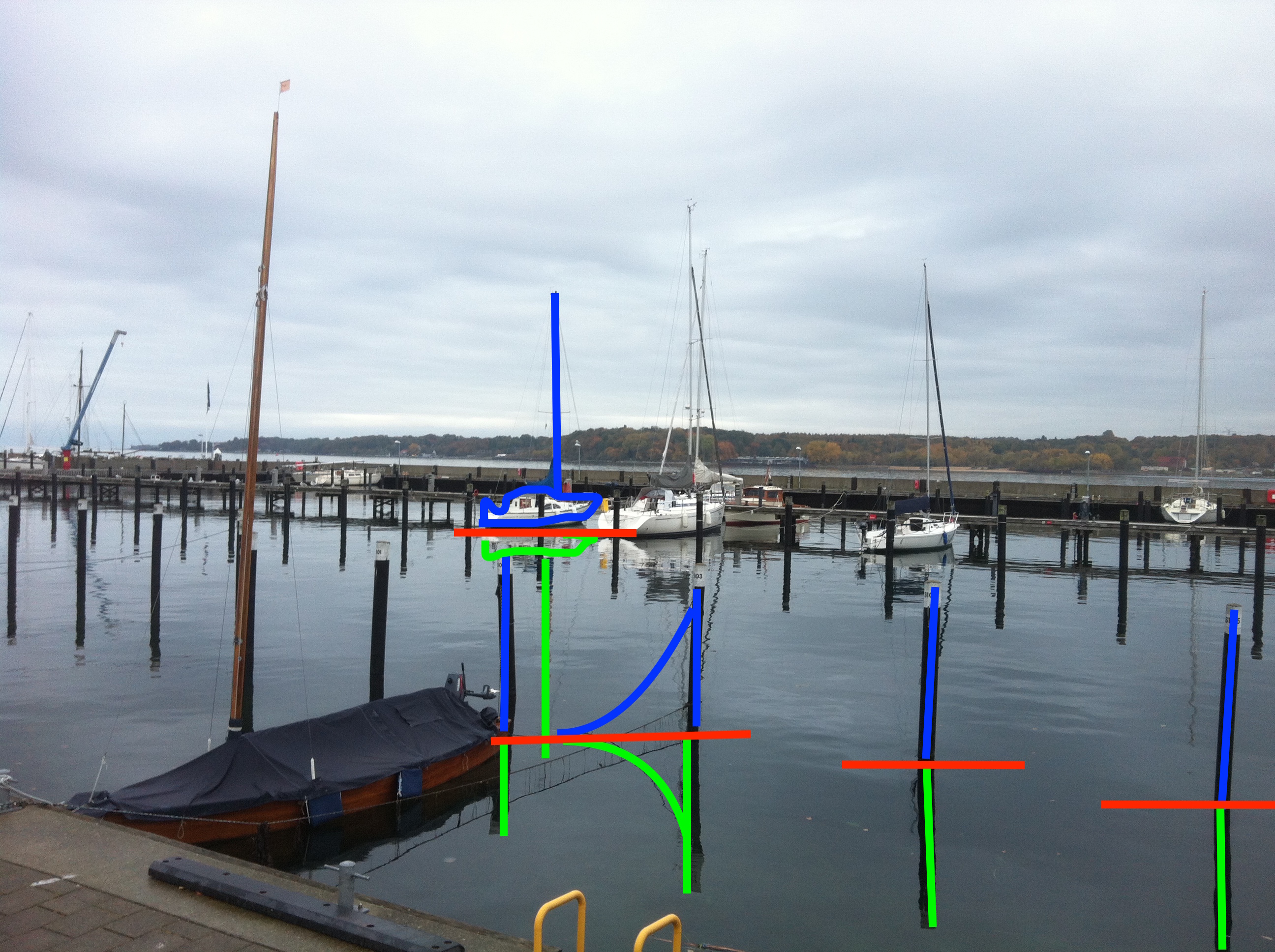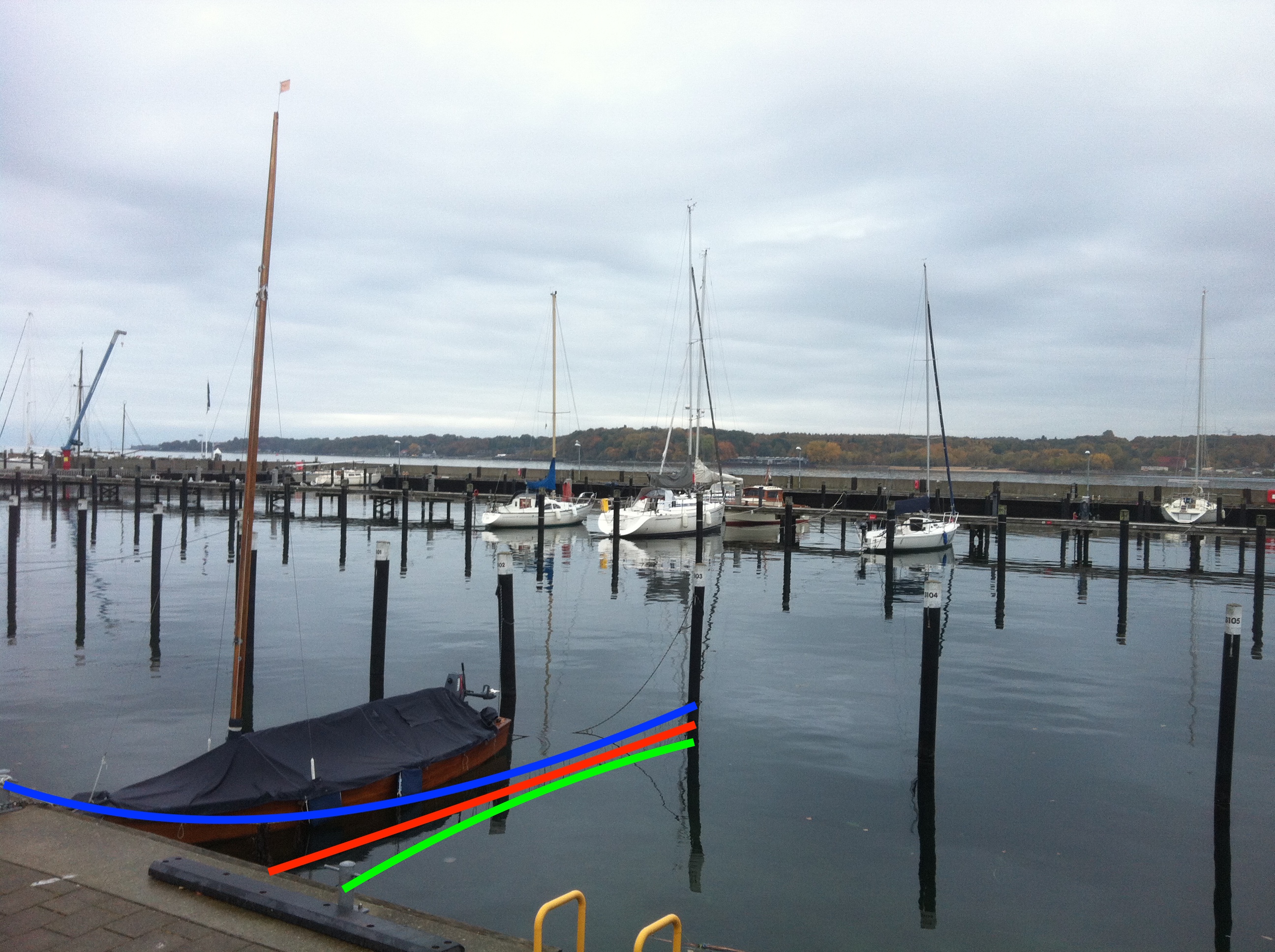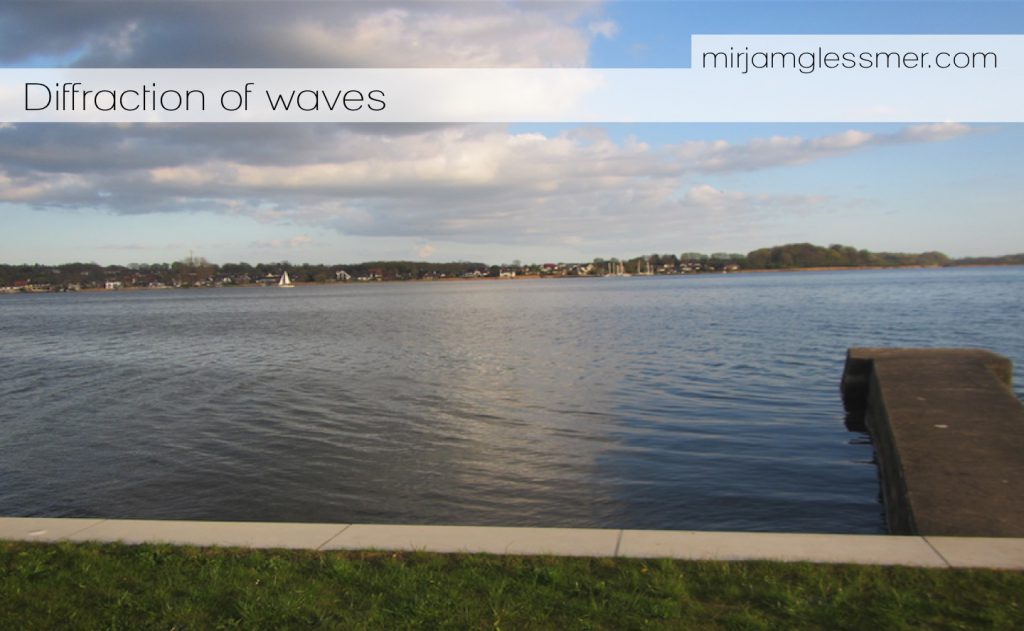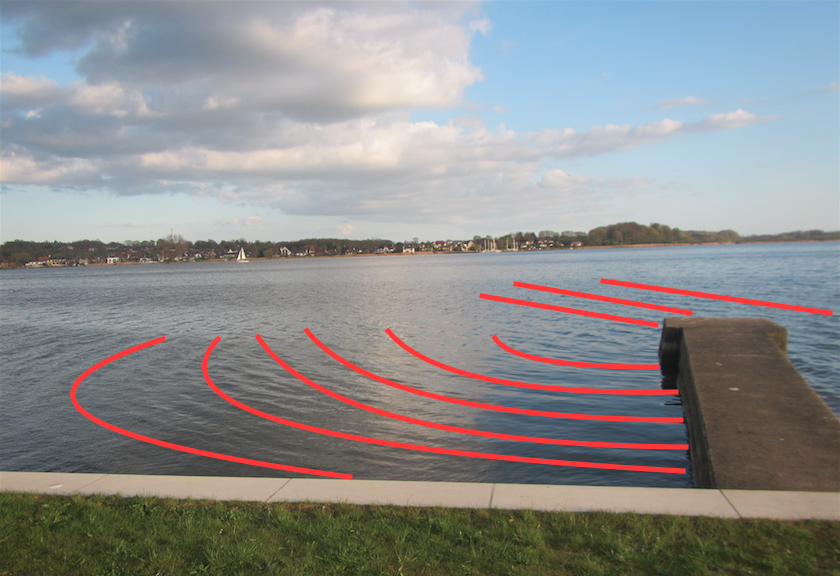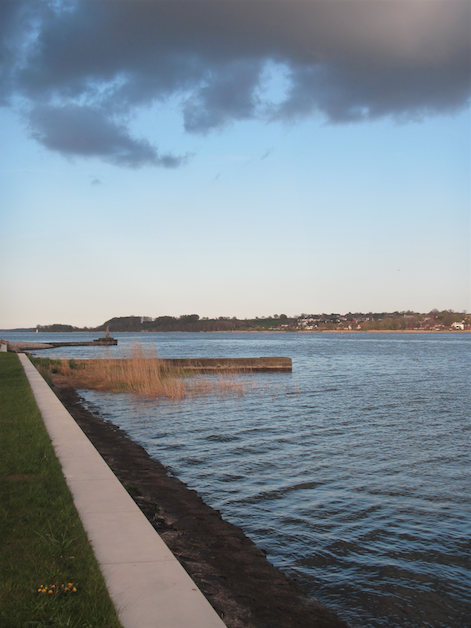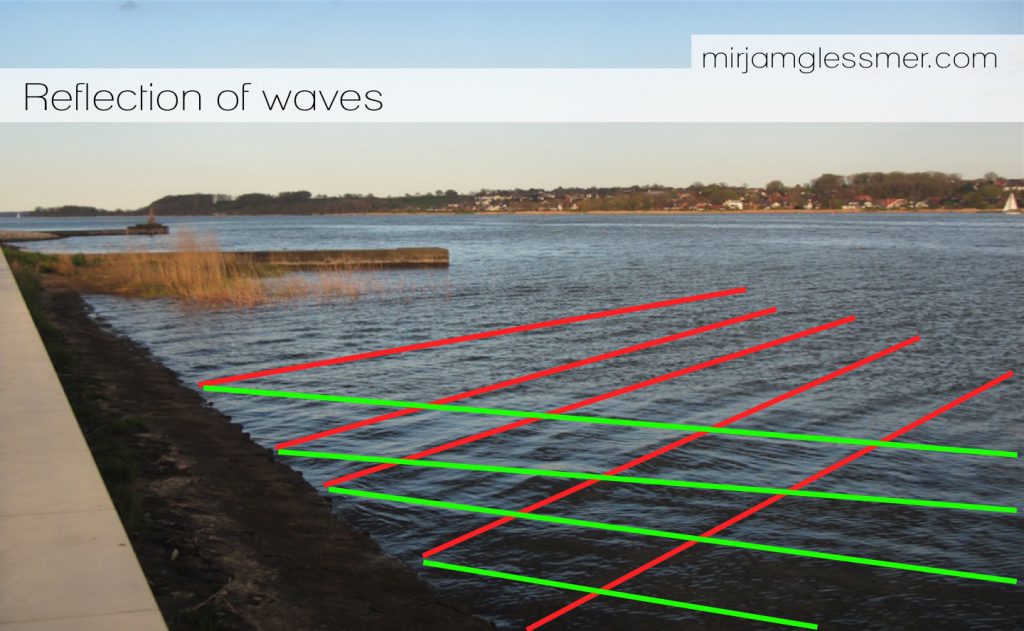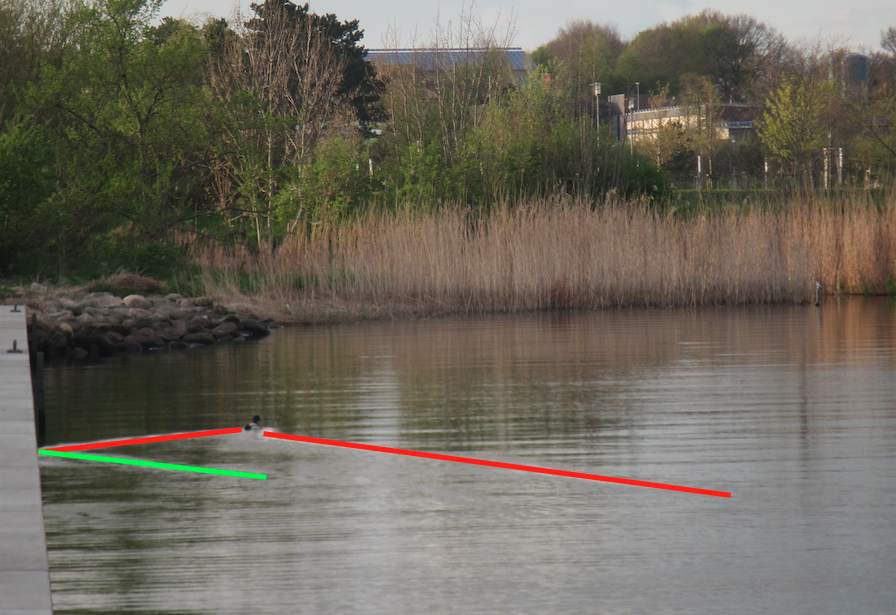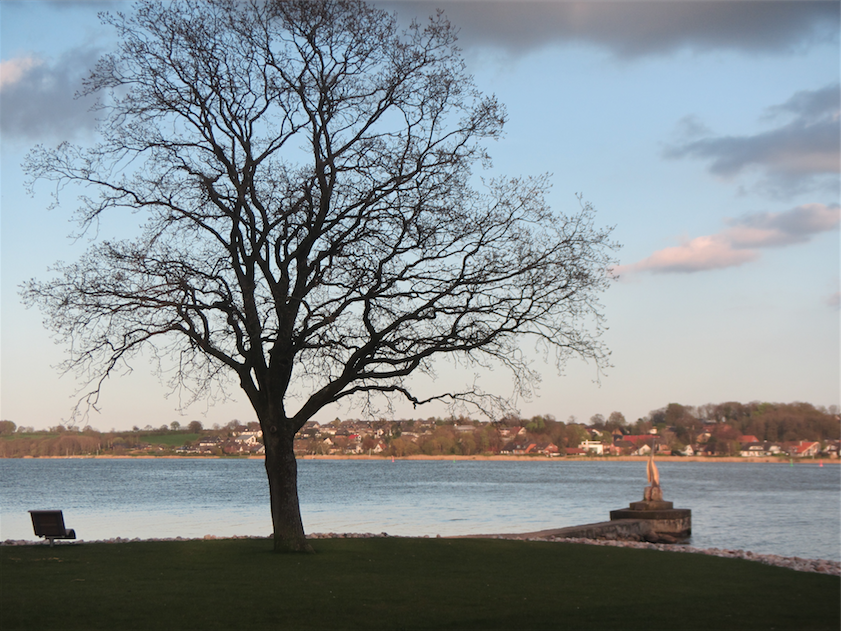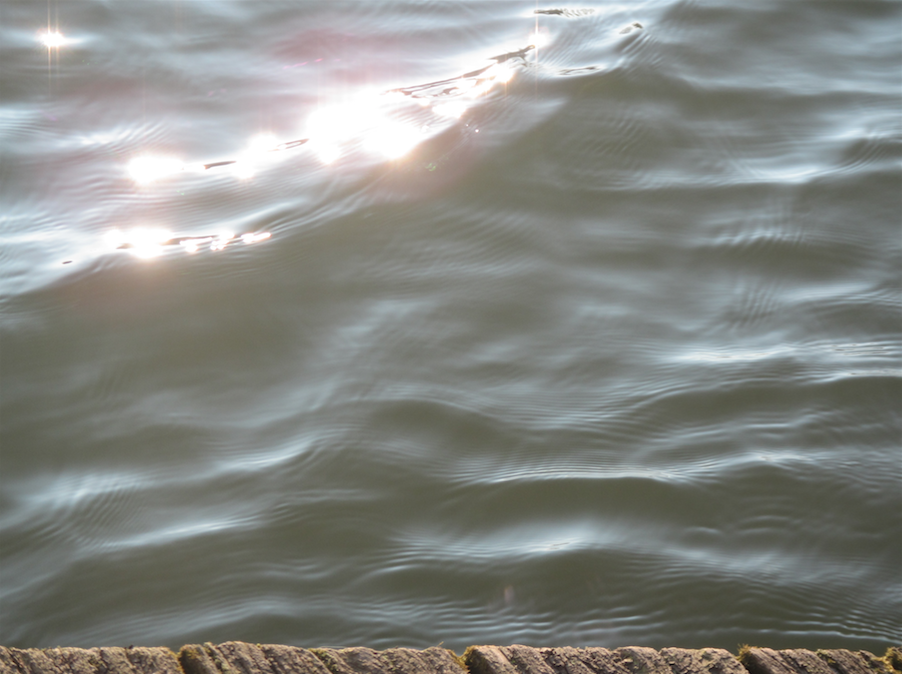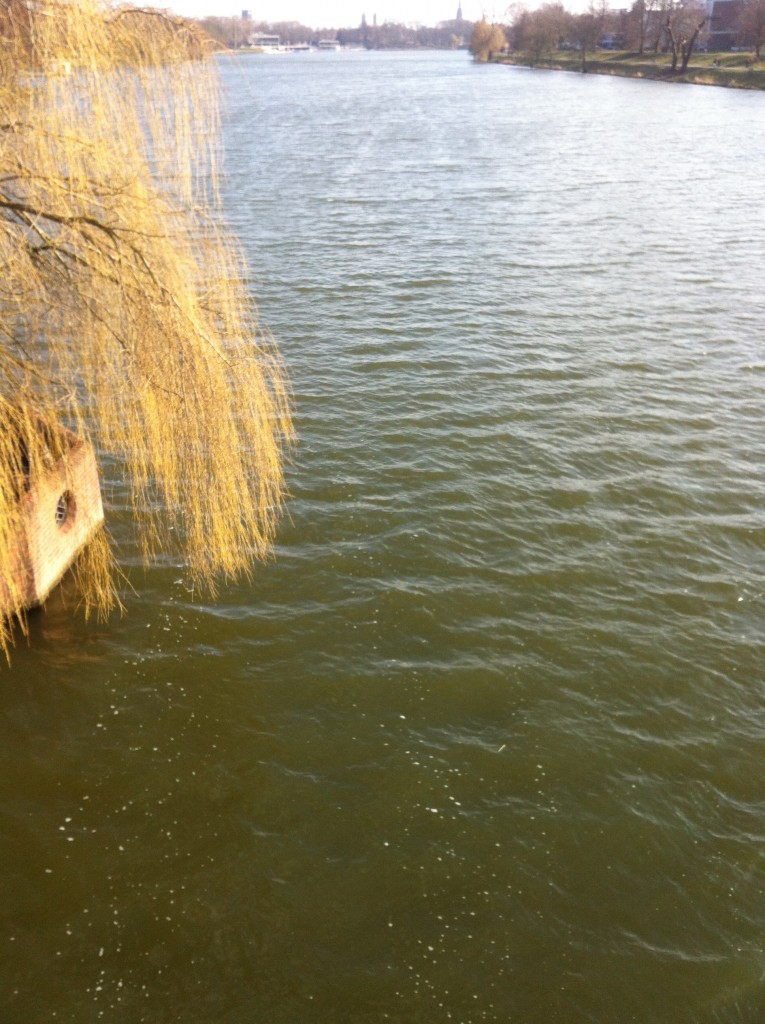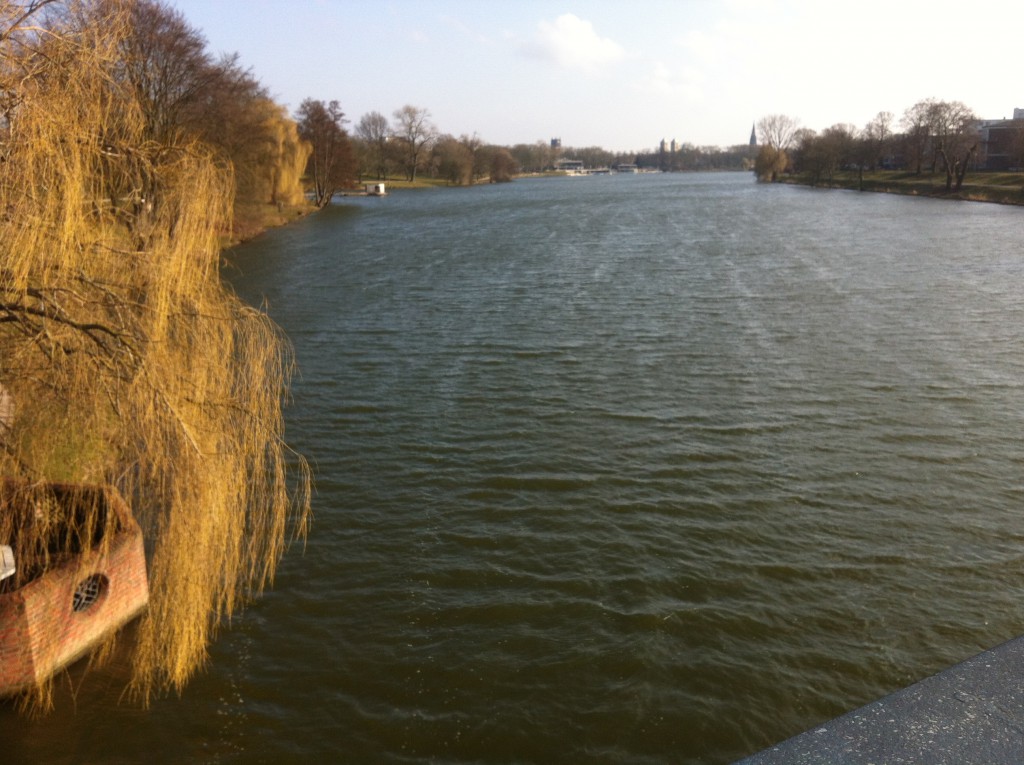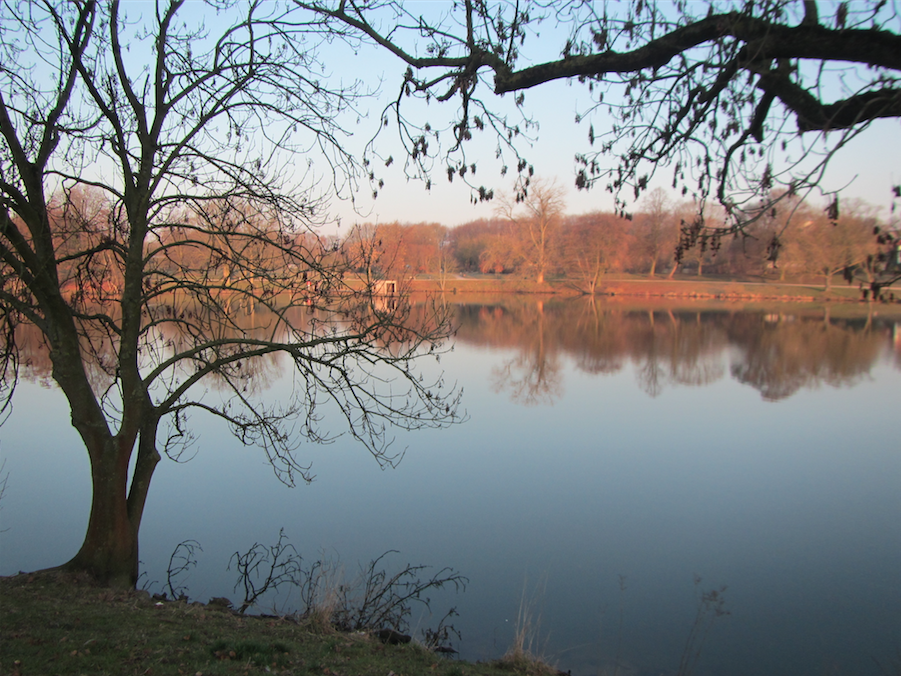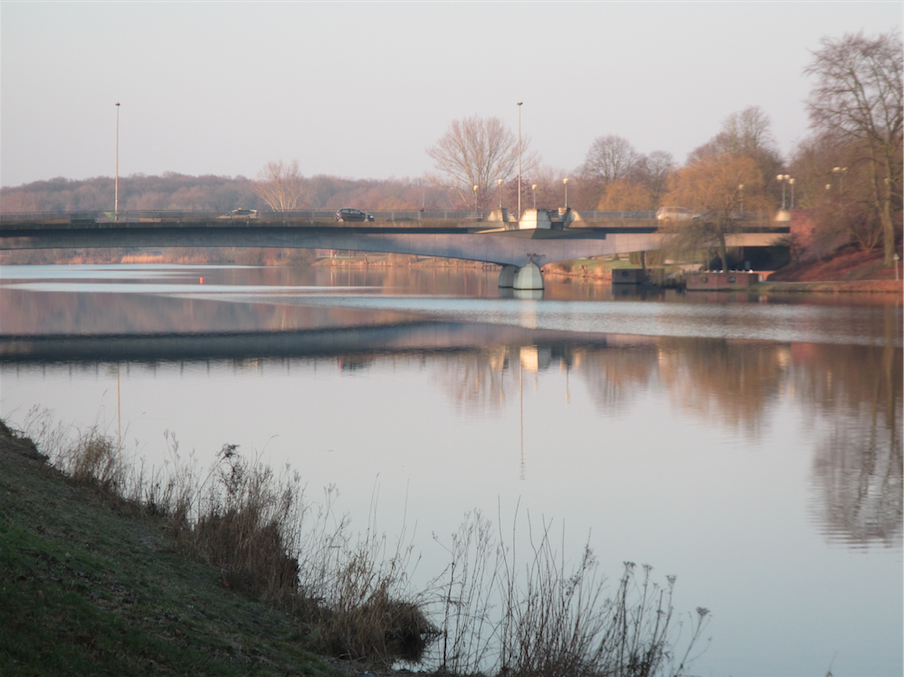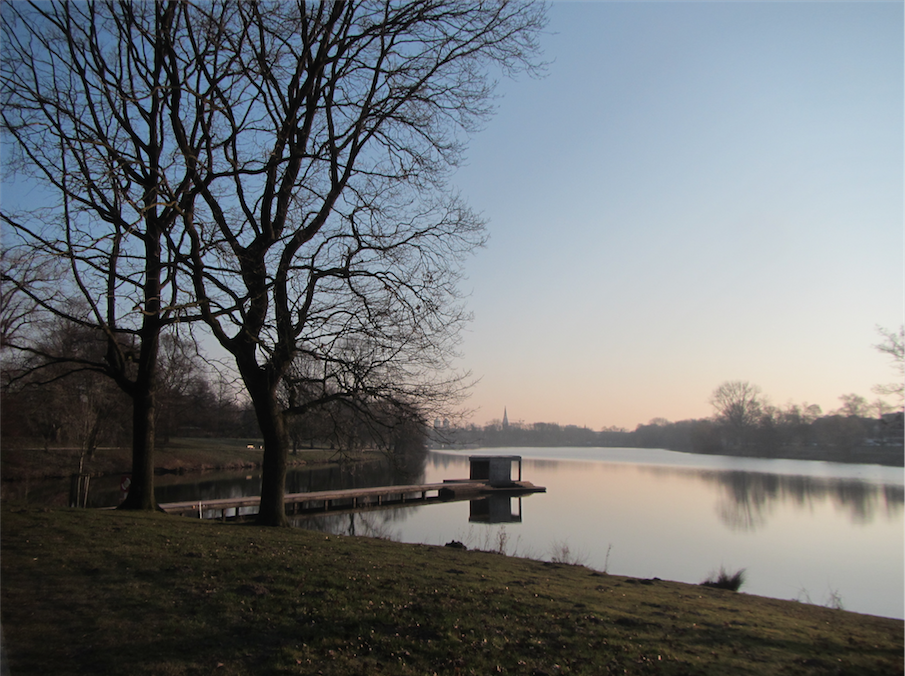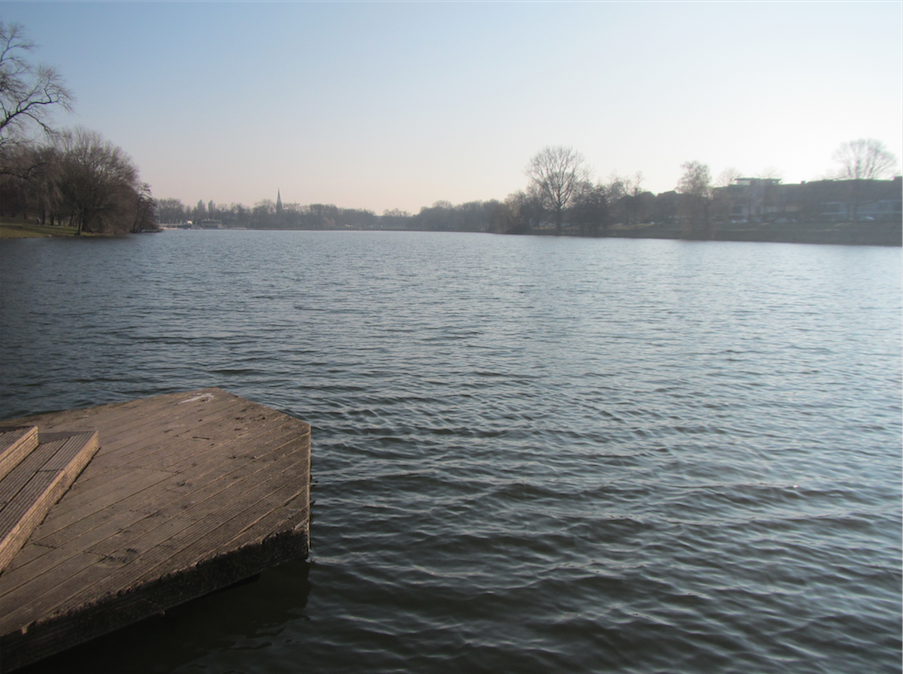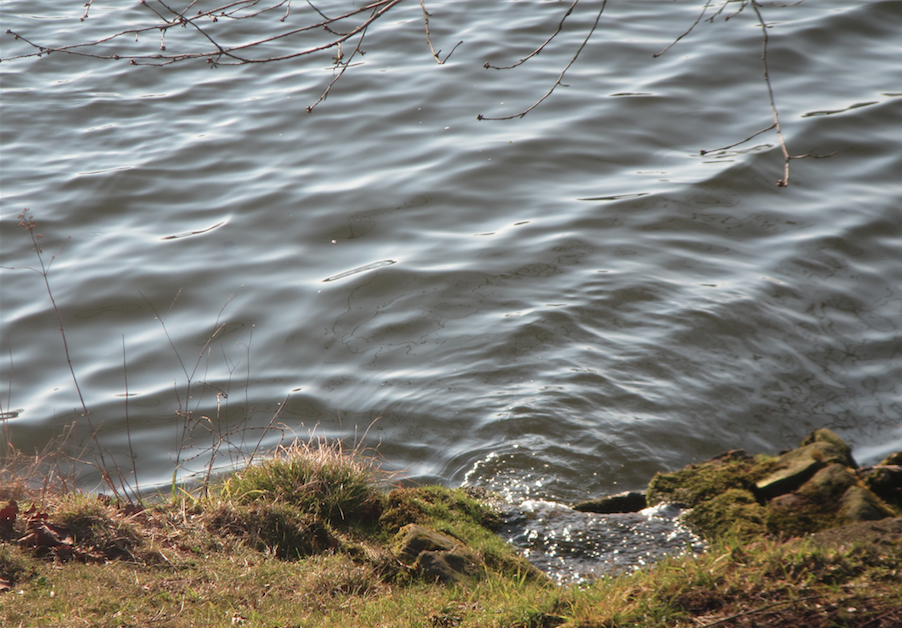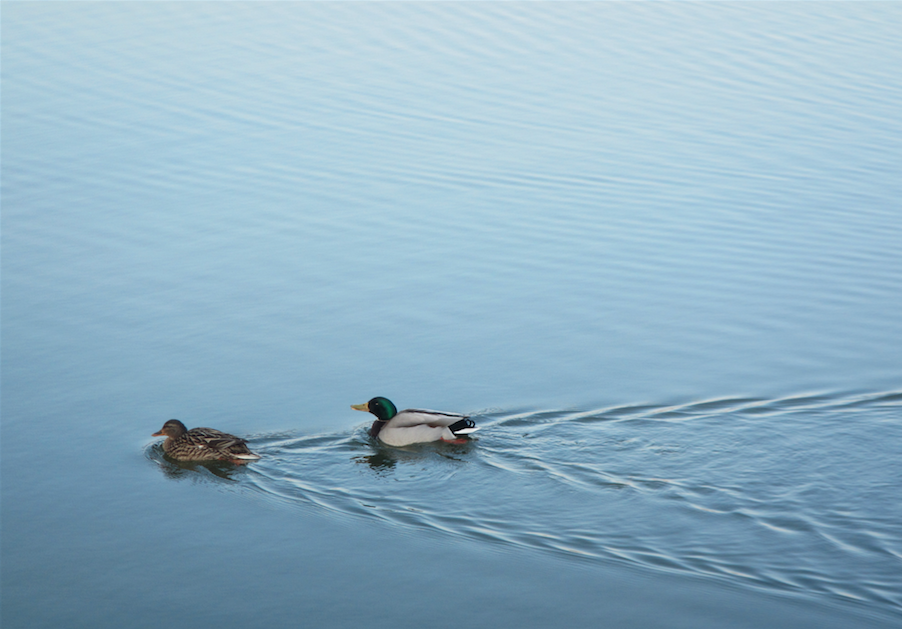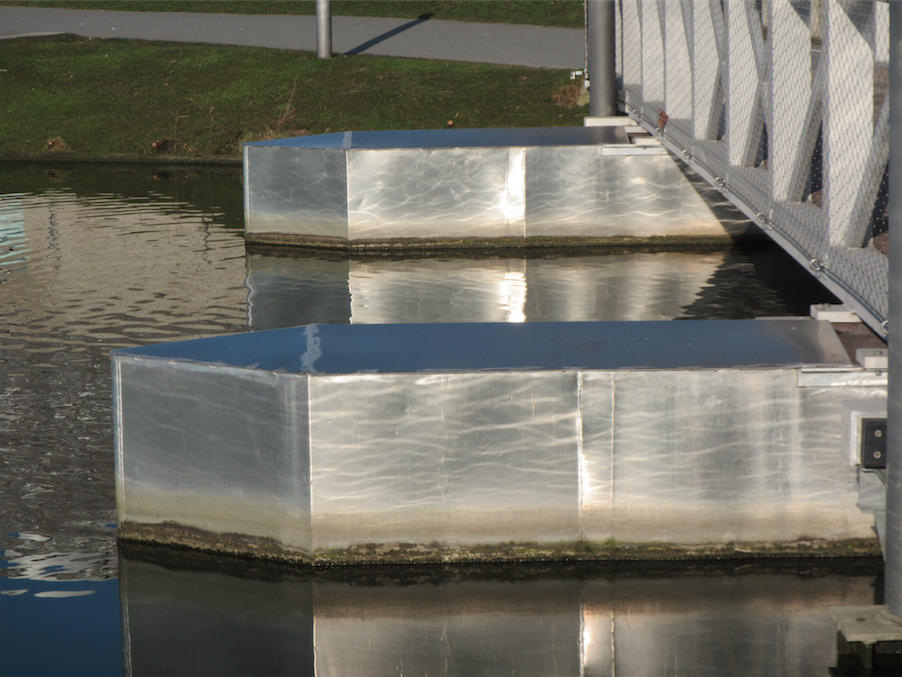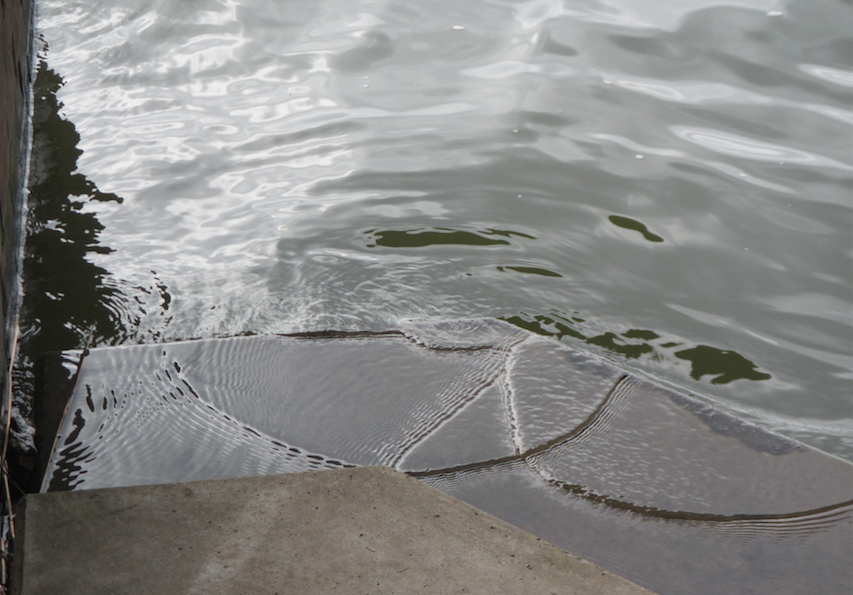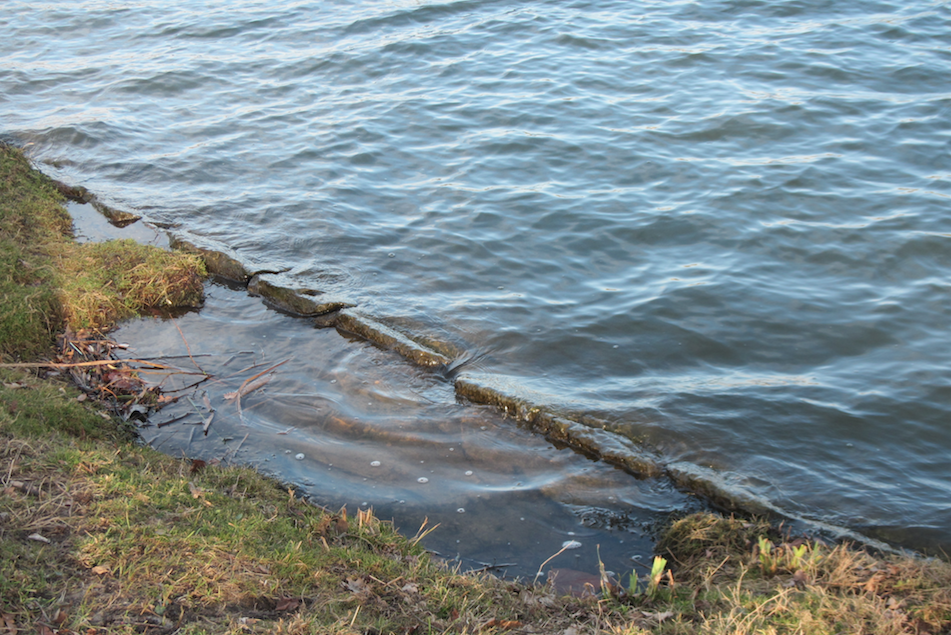One of my favourite topics right now: Learning to “see” ocean physics wherever you go. For example here: A visit to my goddaughter in Schleswig, and this time we are practicing all she and her mom read about in MY BOOK (and if you have good ideas for a title for that book, please let me know!). So today I’m showing you pictures of phenomena similar to those in my book, but discovered on this recent visit.
For example diffraction when waves pass this pier:
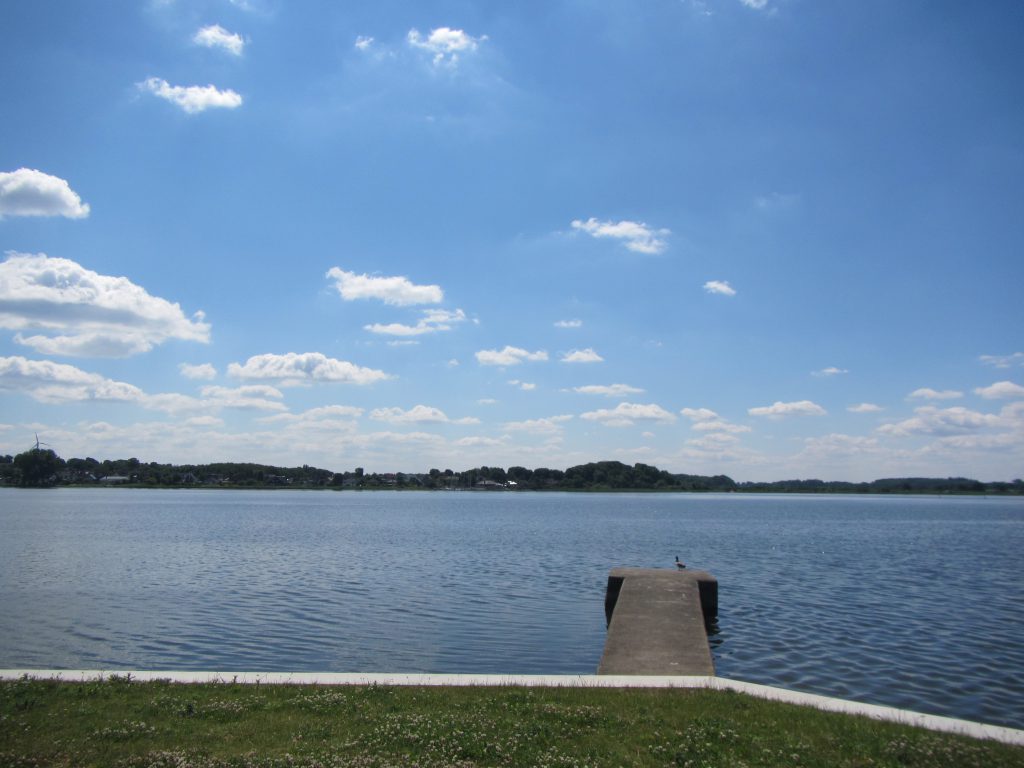
In the image below, I’m showing what I mean: Waves coming in from the right have straight crests (red). As they pass the pier, they get diffracted and bent around (green).
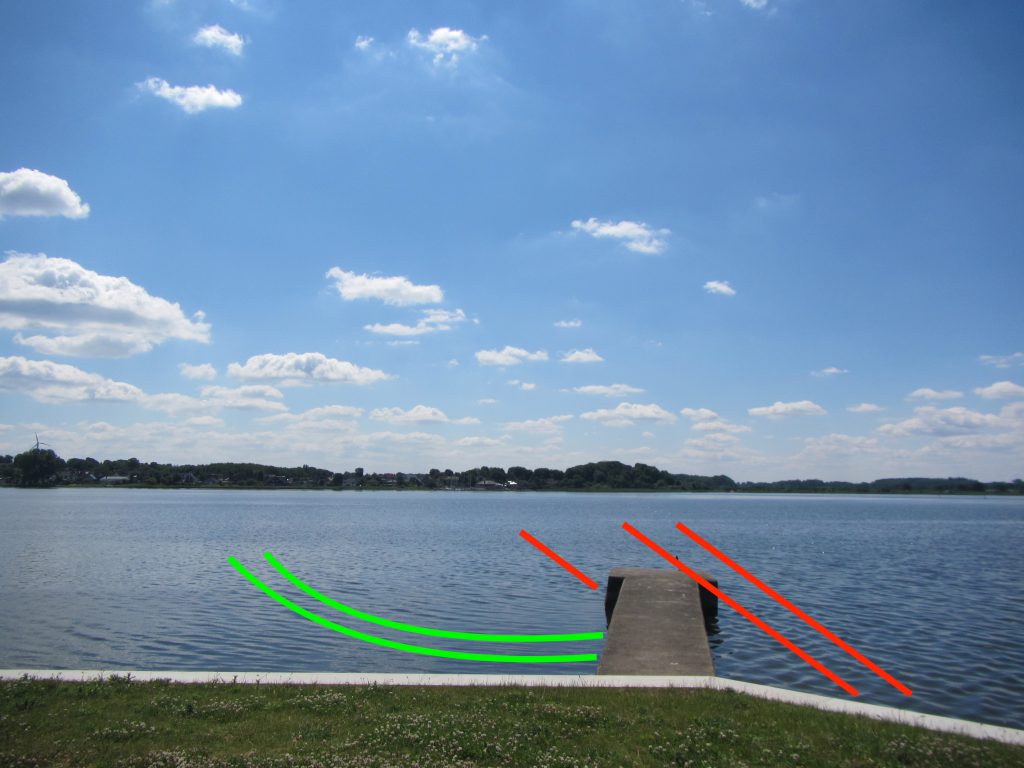
In this spot, this phenomenon can be seen on most days. I wrote about it before, but I have more pictures from previous visits, where the same thing happens in the opposite direction, too: Waves propagating in from the left and being bent around the pier to the right.
Or we can see other wave crests, meeting a rock that breaks the water’s surface.
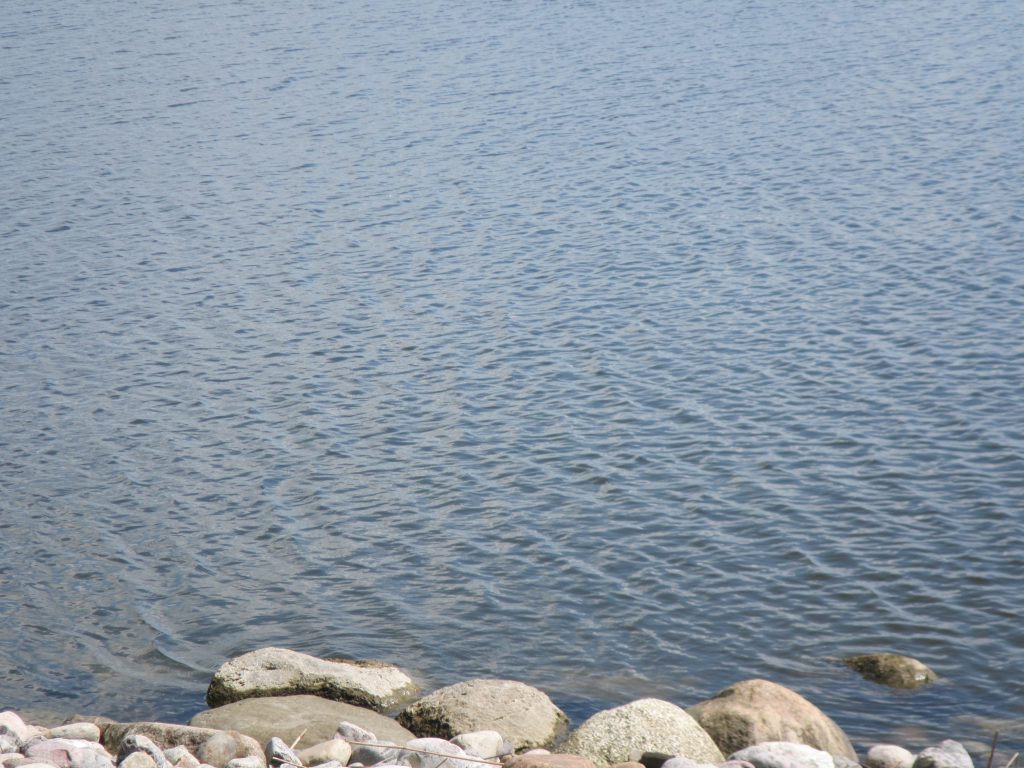
Those waves (shown in red in the image below) get reflected from the rock, and circular waves radiate away from the rock (green).
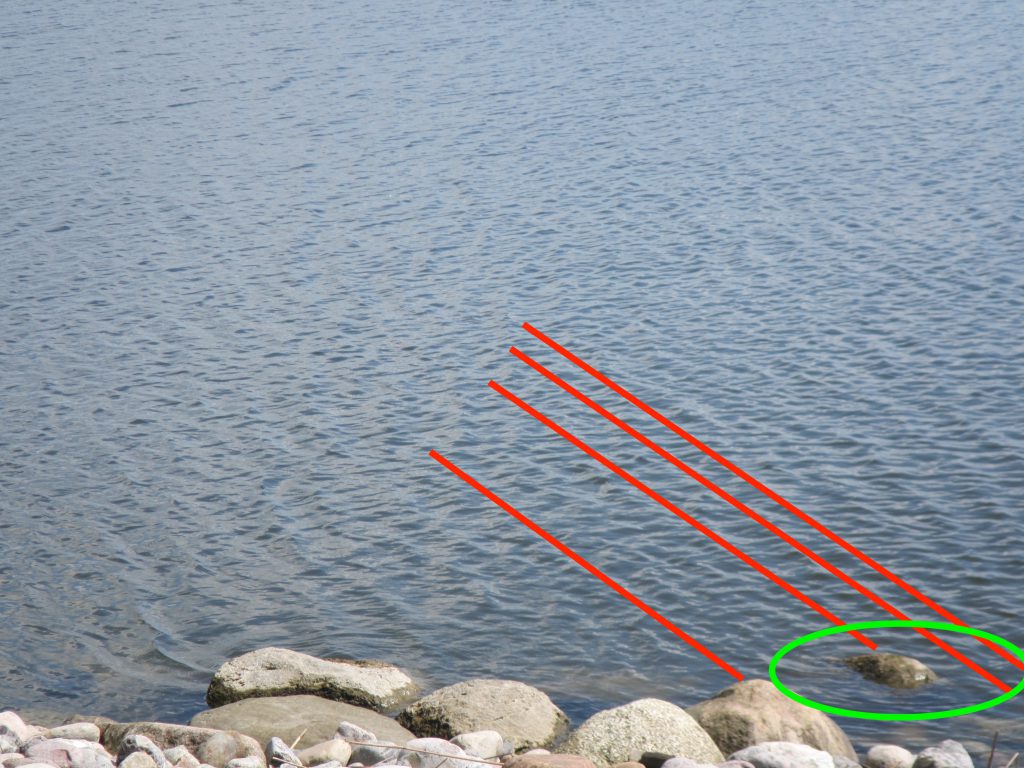
A similar thing can also be observed from a flag moored out in the water:
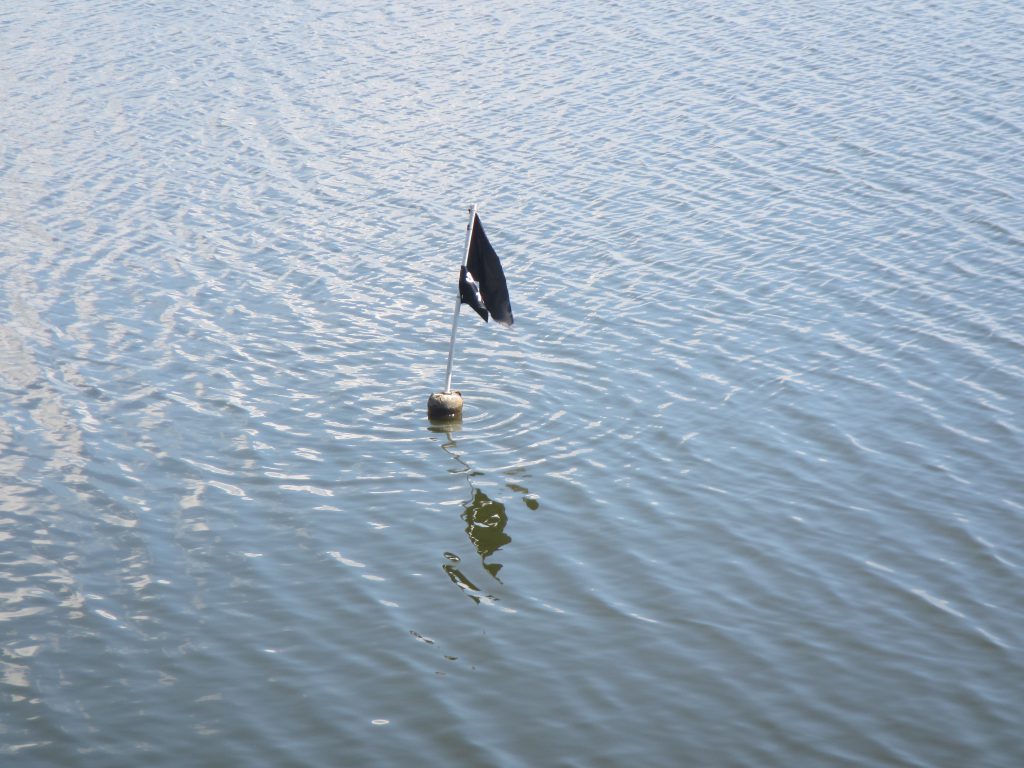
This time, incoming waves are green and the circular waves radiating off the flag are red.
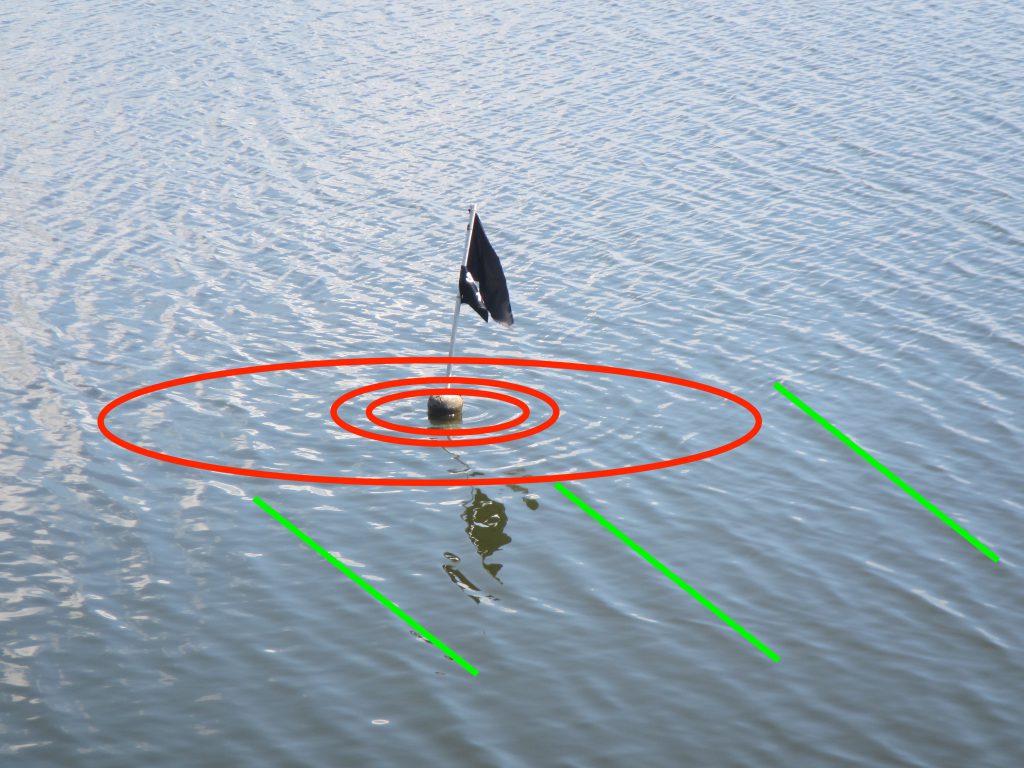
And we also got to see awesome criss-crossing again, albeit in a different spot:
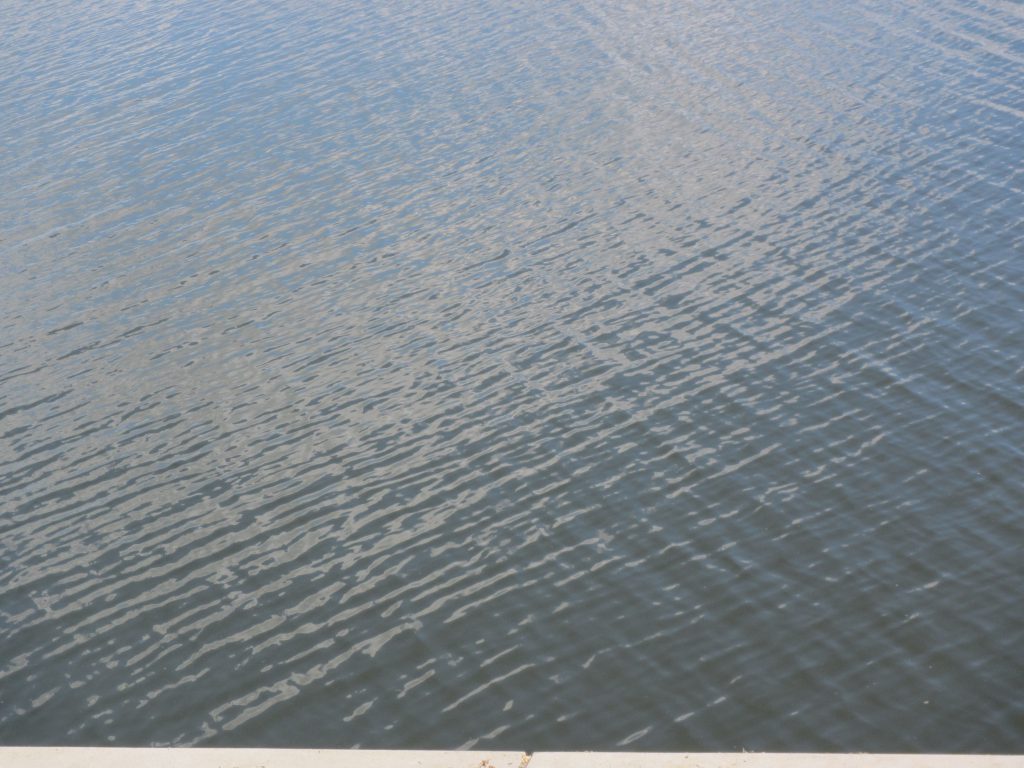
Here we have the red wave crests coming in, and the green reflections.
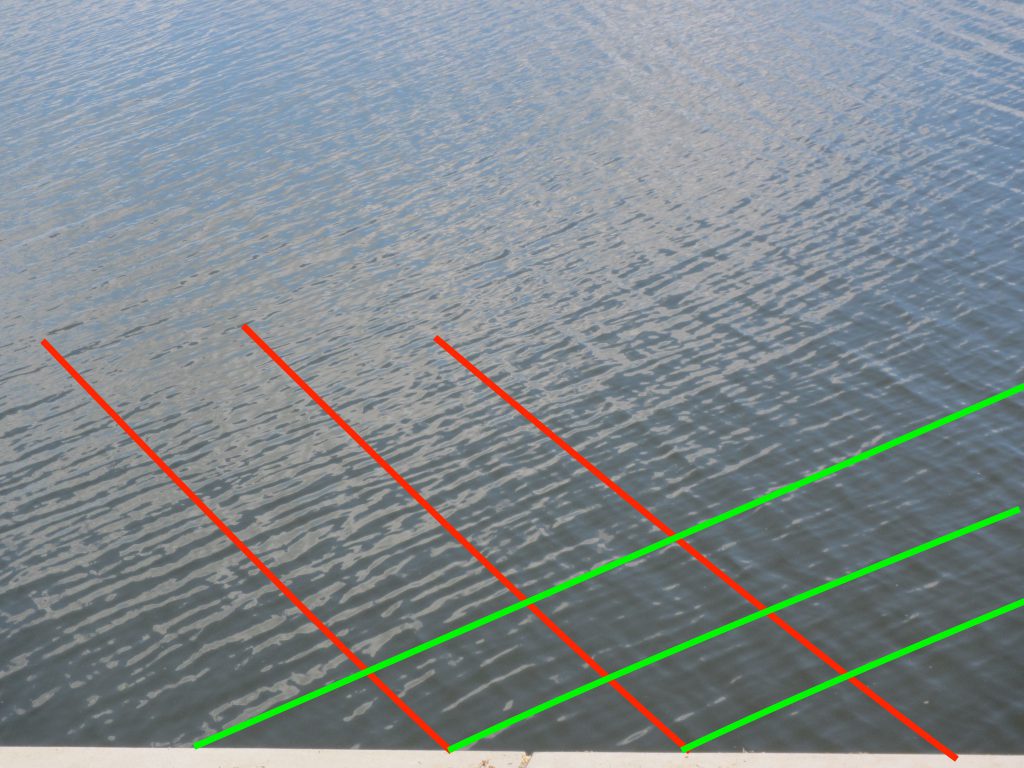
If we look at it from a little more distance, we can also see another phenomenon: The wave crests are refracted towards the shallower shore:

Again the red crests are the original, incoming ones, and the green ones are the reflection:
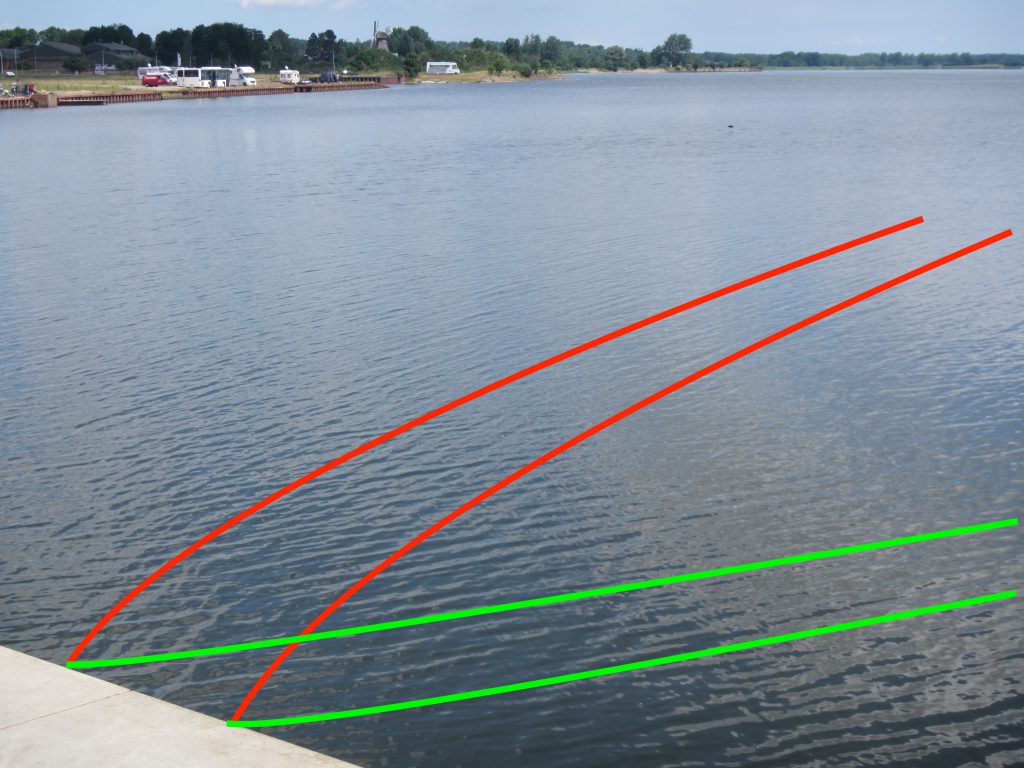
And then finally, let’s look at duckies again. And on waves being created by wind:
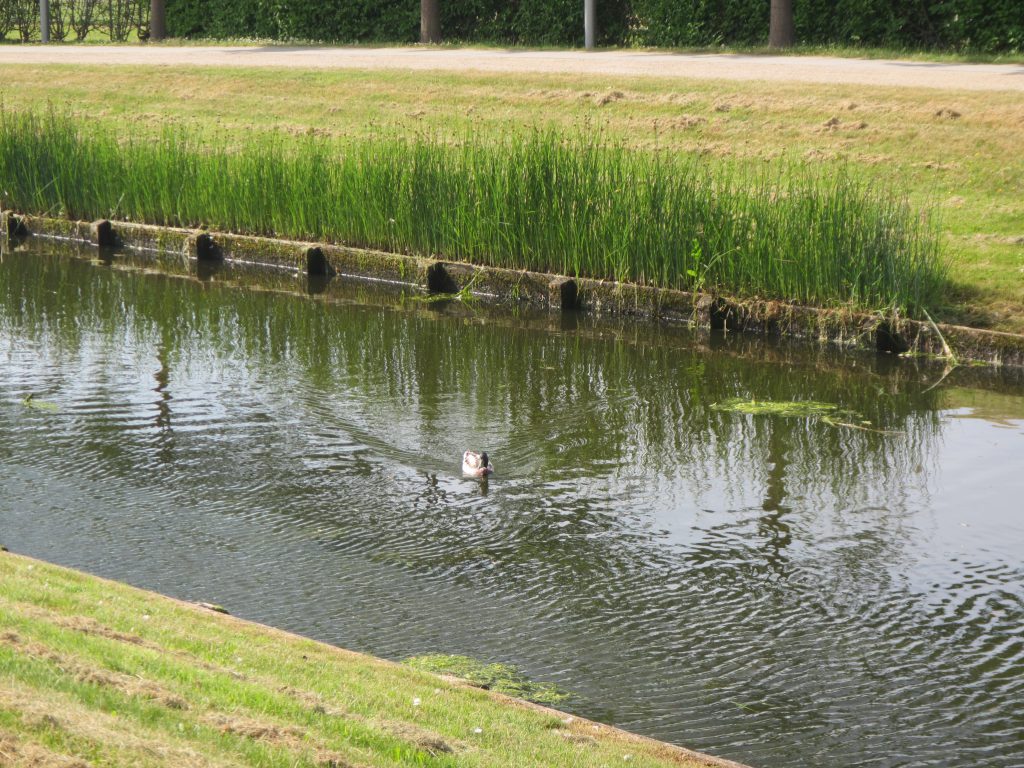
Below you see the direction of the wind (white): One side of this little channel is shaded from the wind, so hardly any ripples there. But then on the other side, we clearly see ripples and small waves. And we see the wake the ducky made!
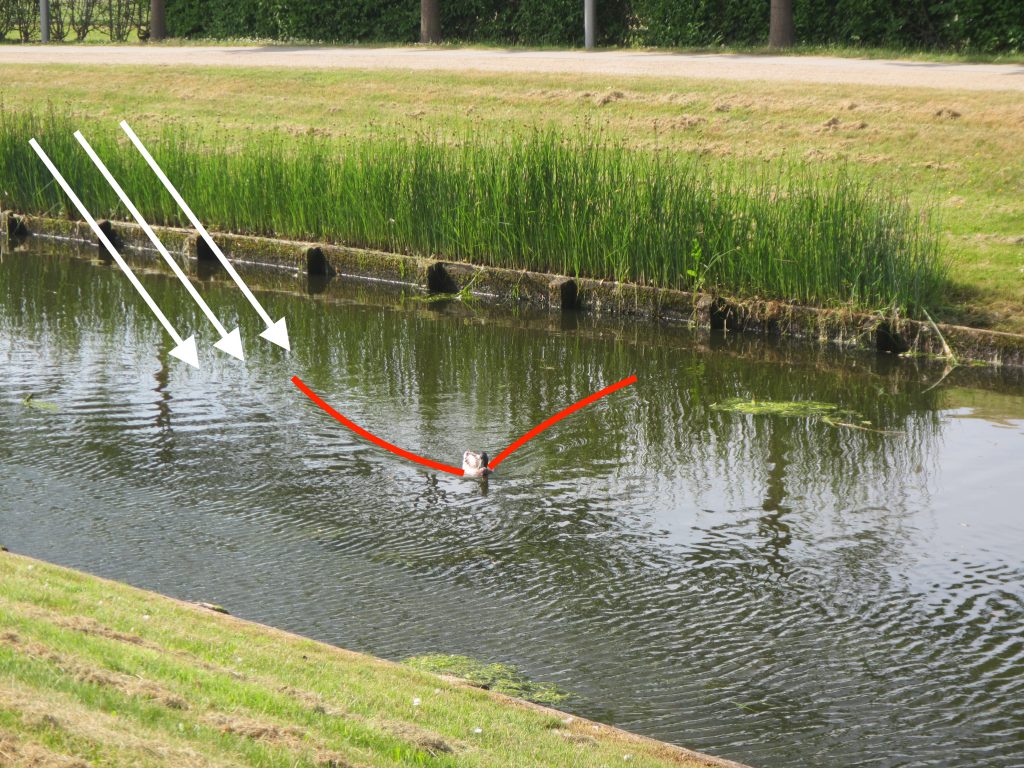
And one last picture: Which direction does this little channel flow in?
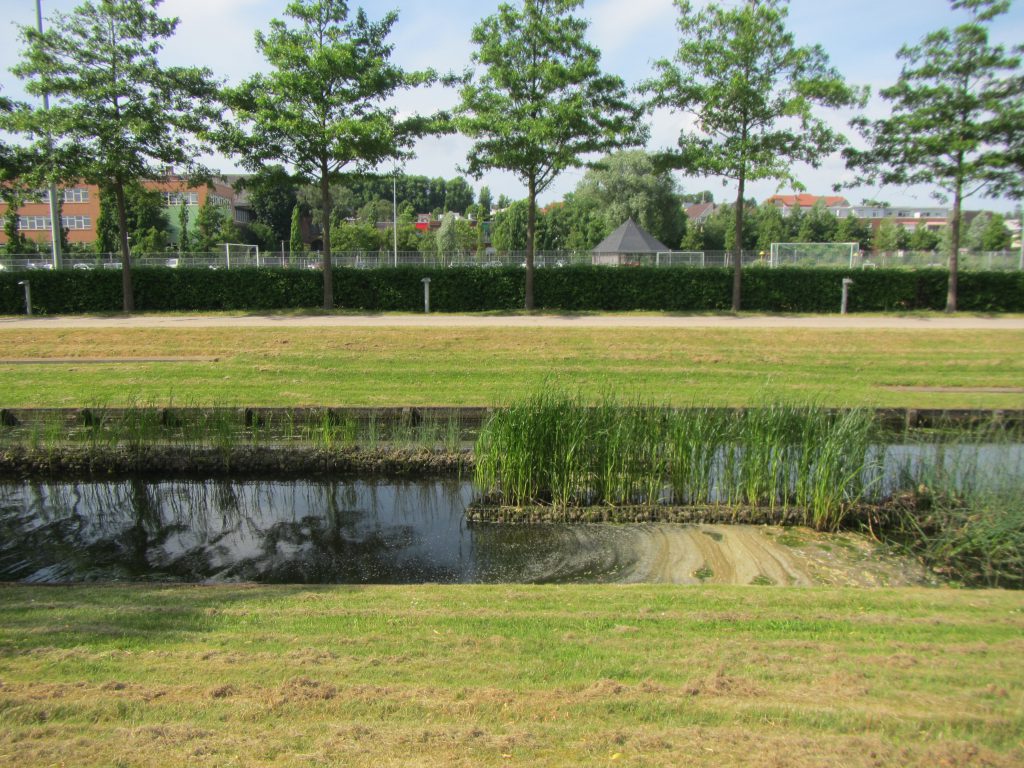
Yep. From the left to the right!
If you enjoy discovering this kind of stuff on your walks, or know someone who enjoys it, or want someone to learn to enjoy it, you might want to consider checking out my book. In my book, I show many pictures like those above, but I actually explain what is shown in the pictures rather than assuming (like I do on this blog) that my readers are oceanographers anyway… :-)
